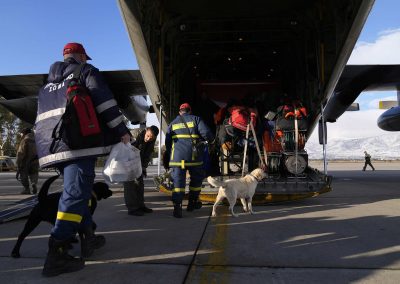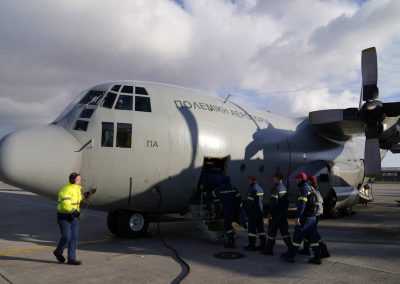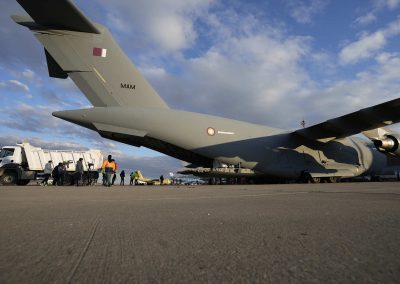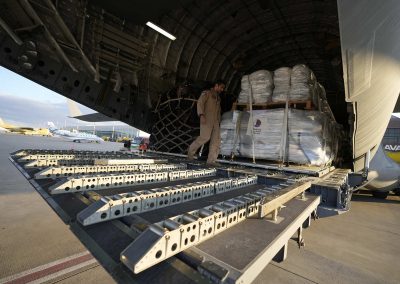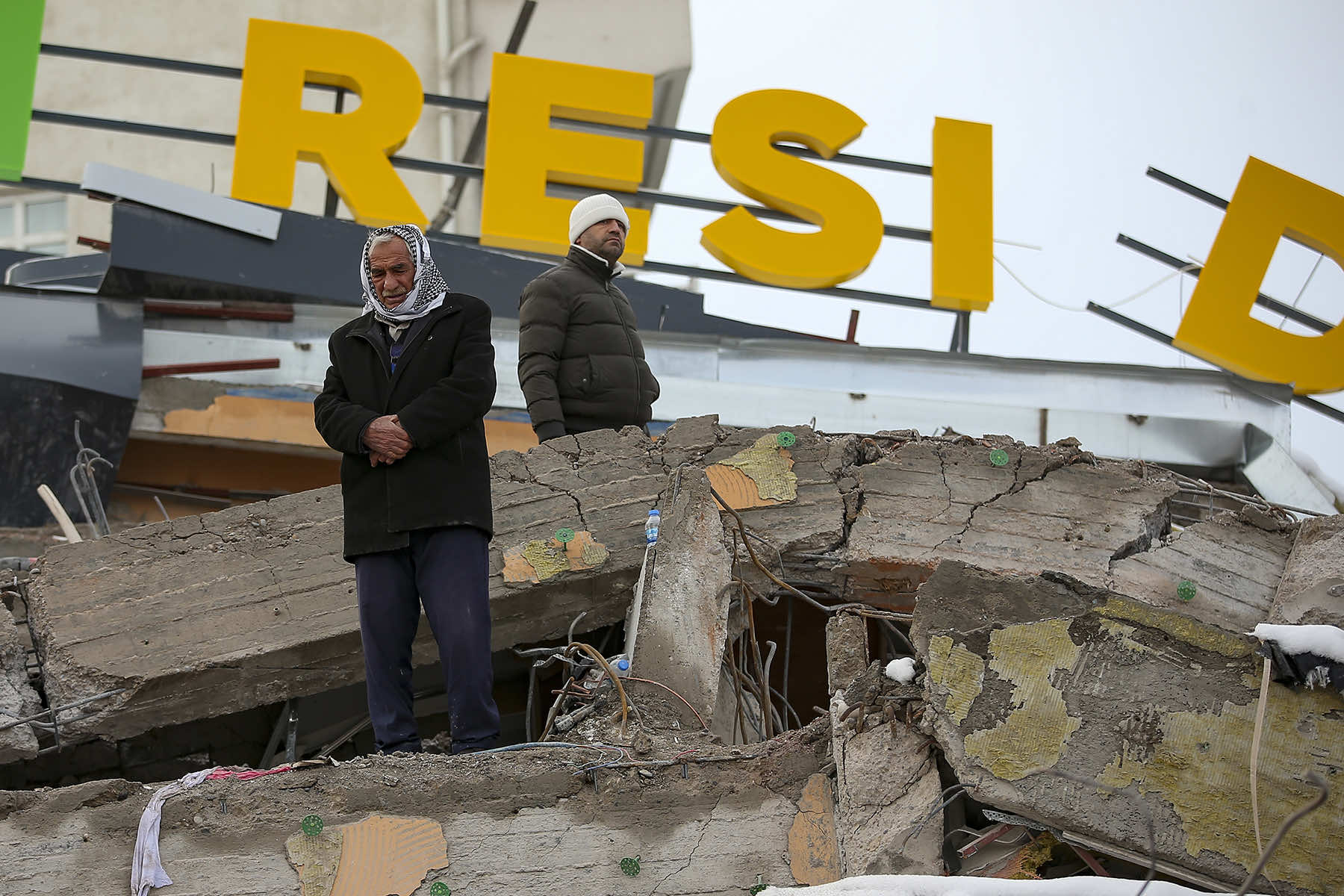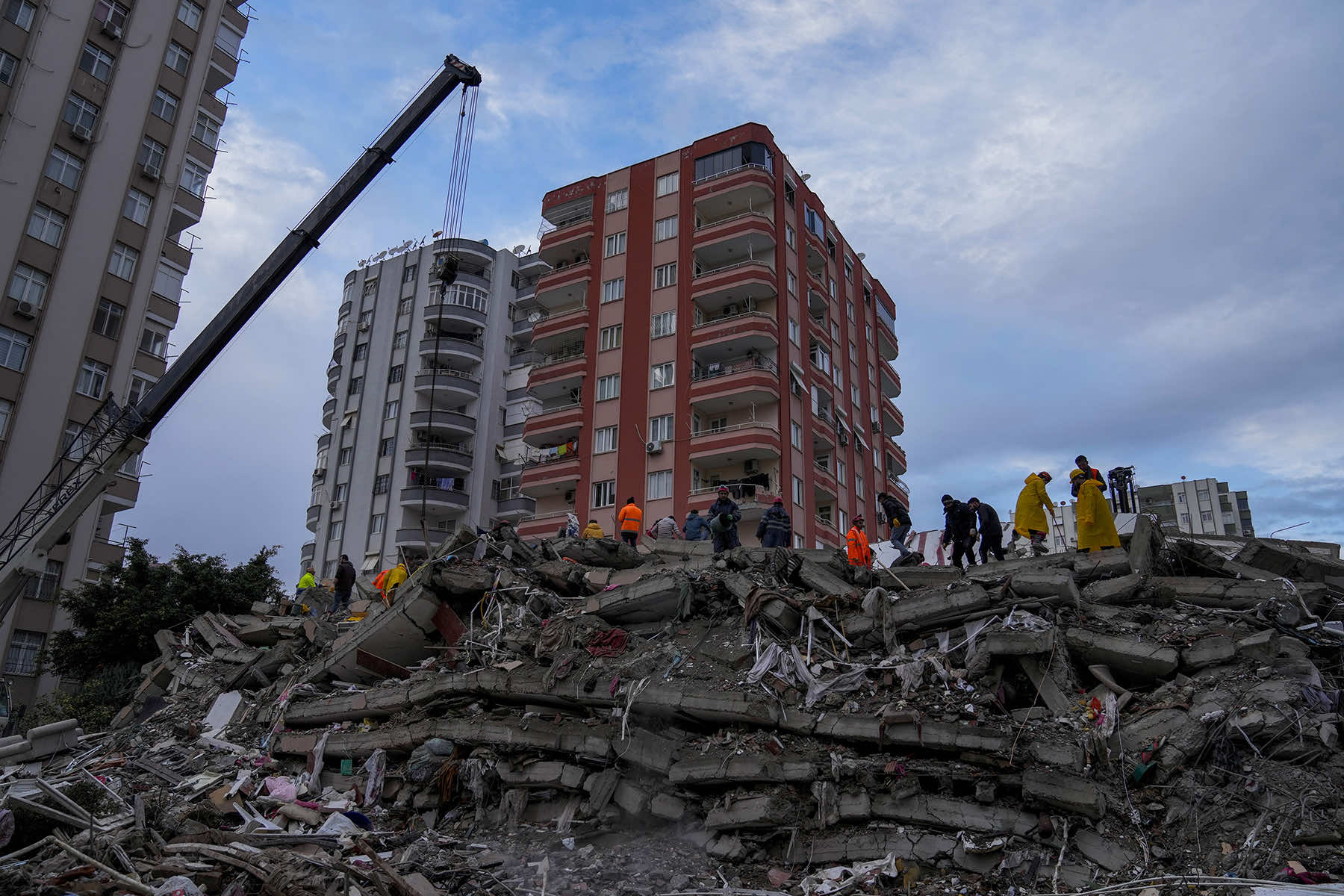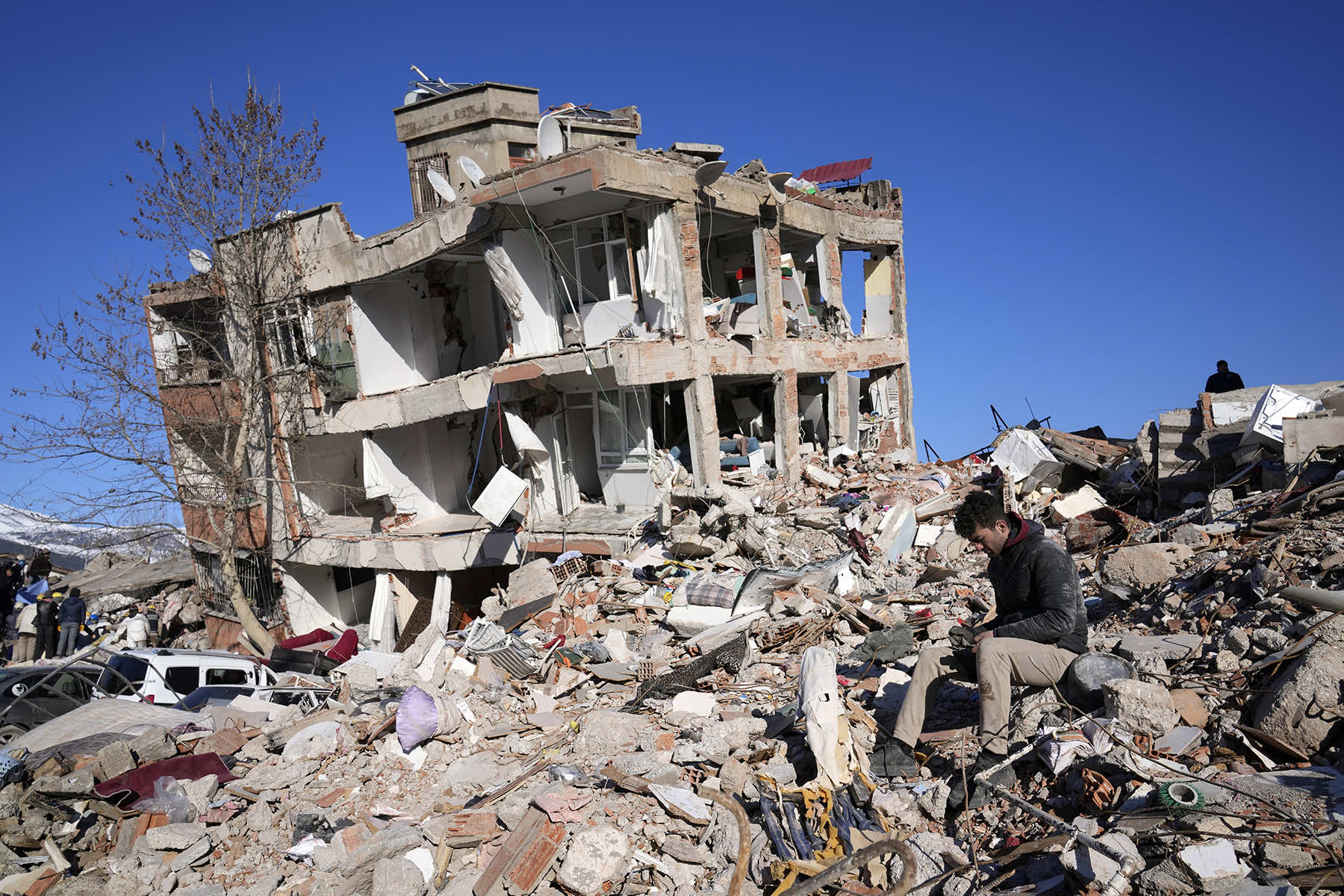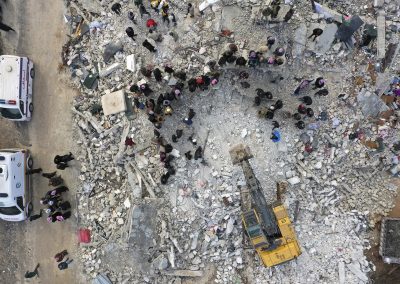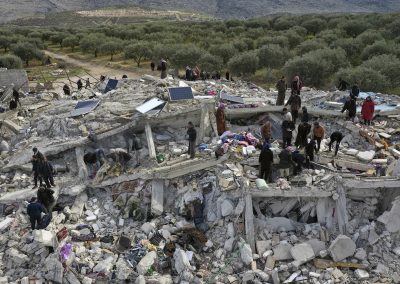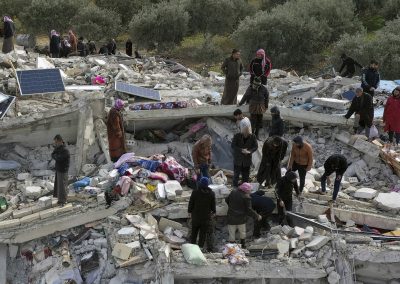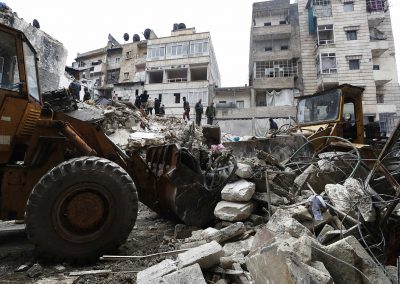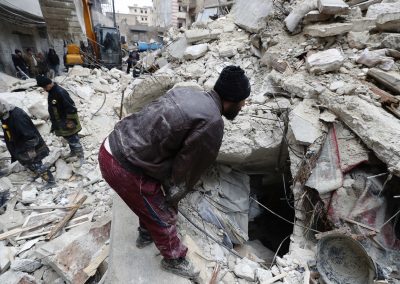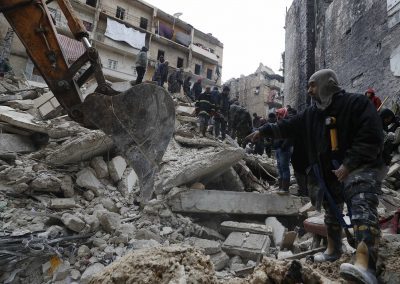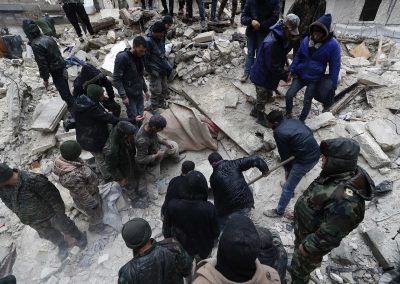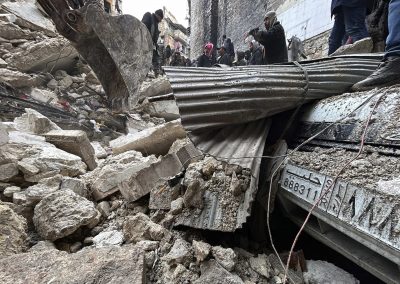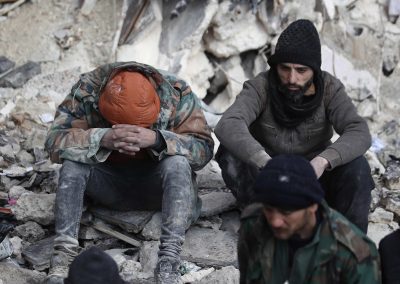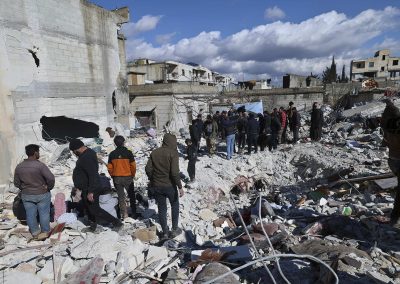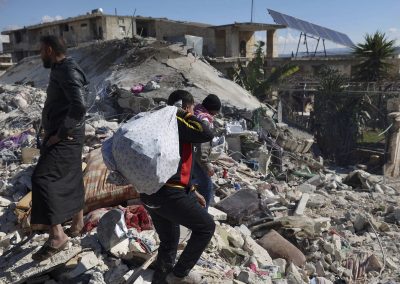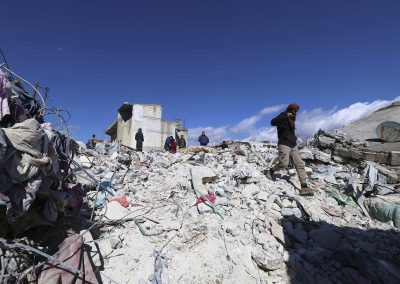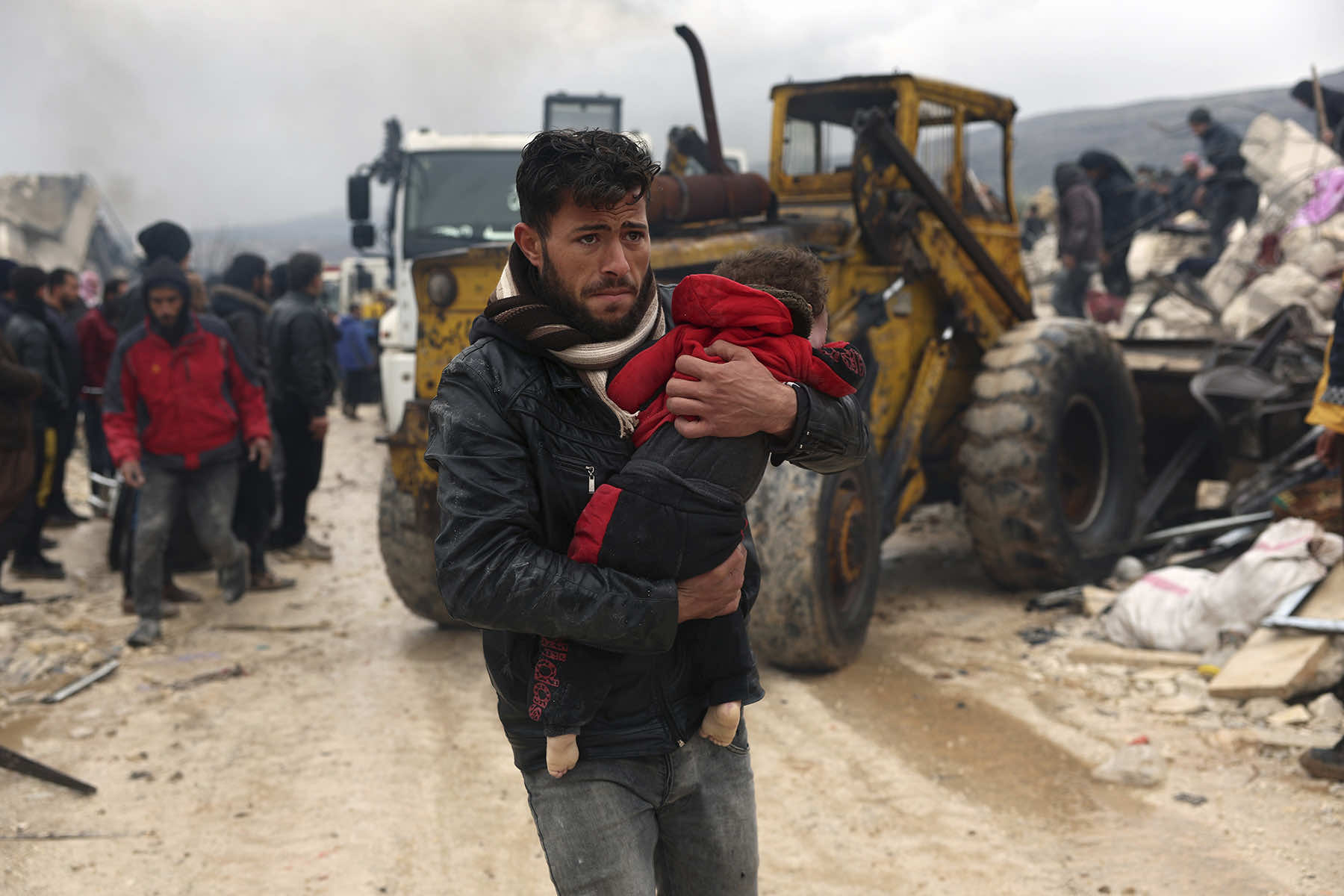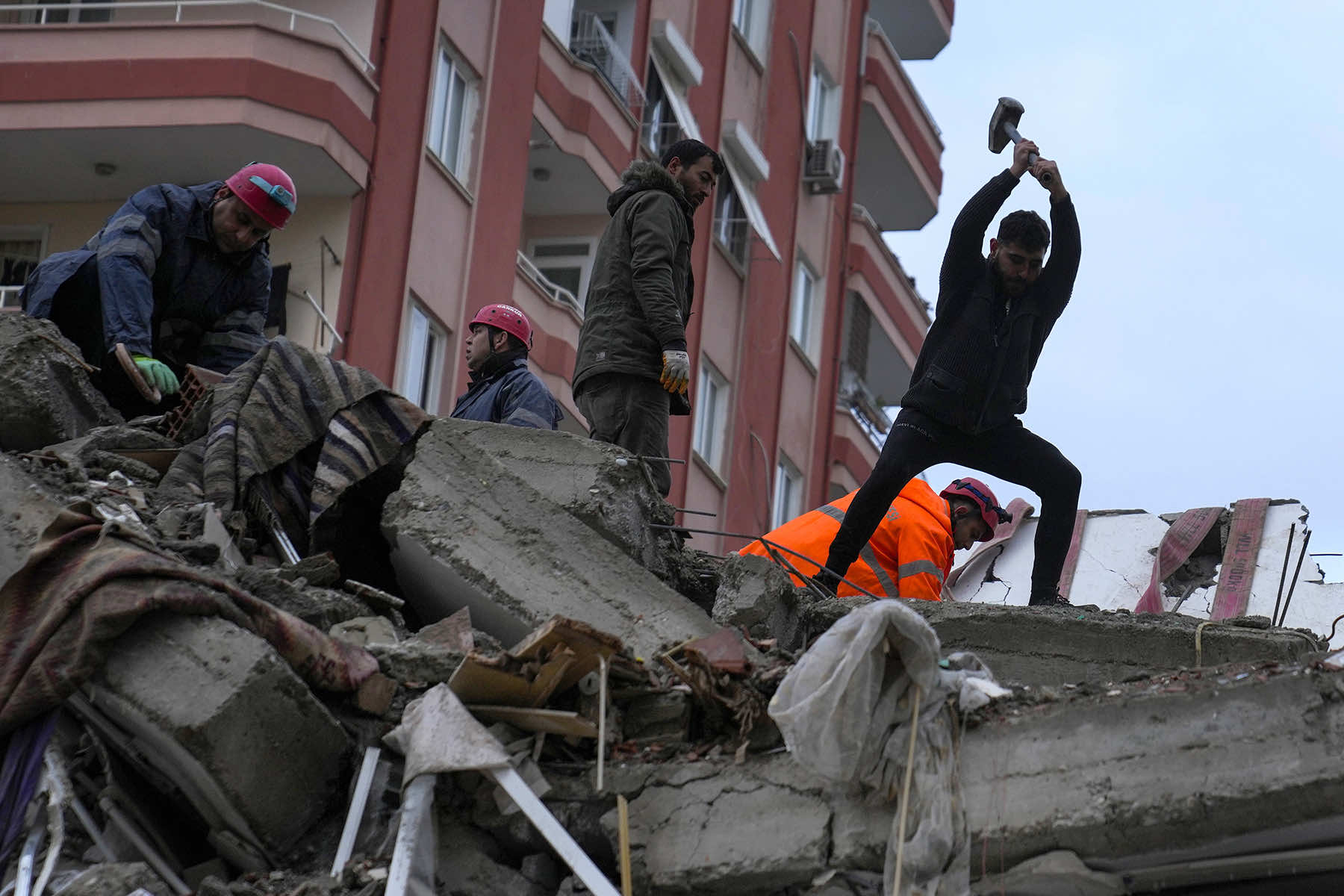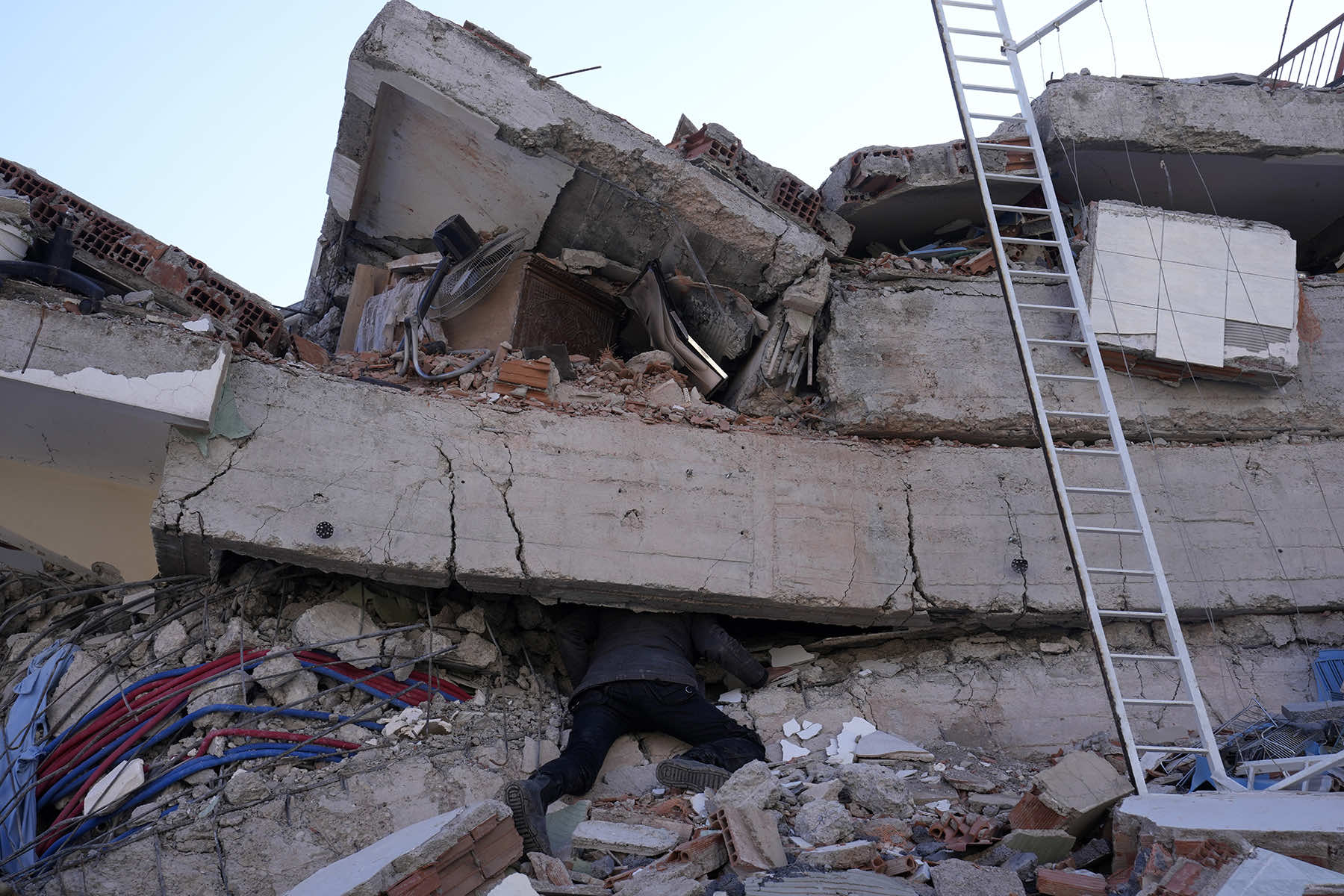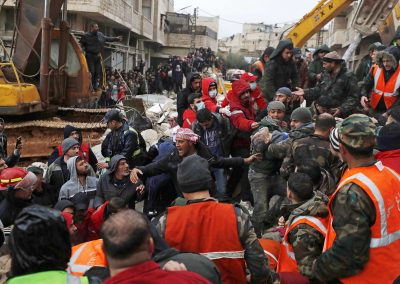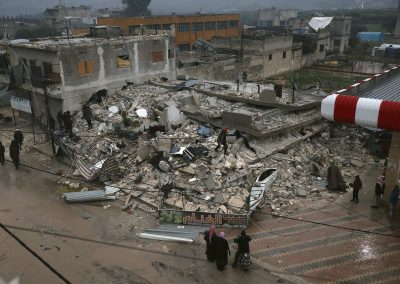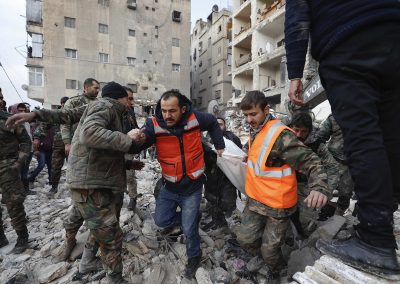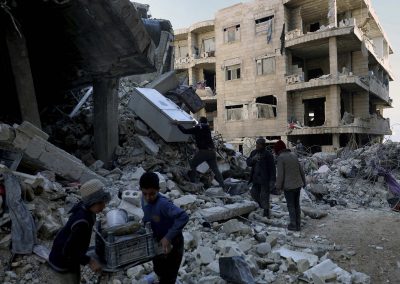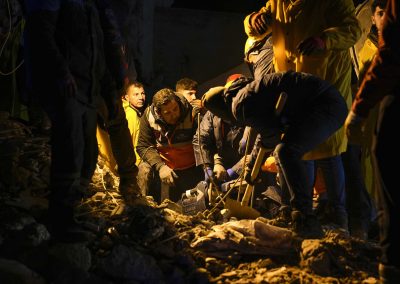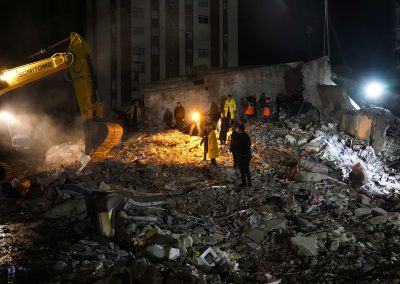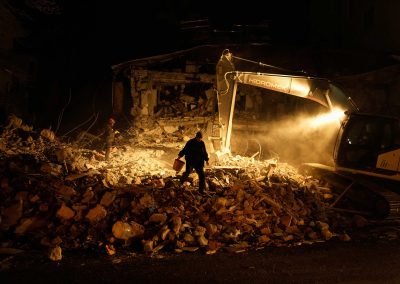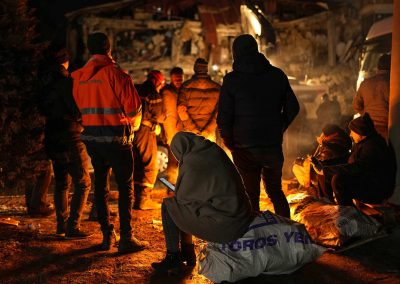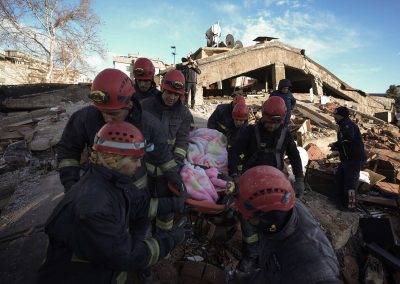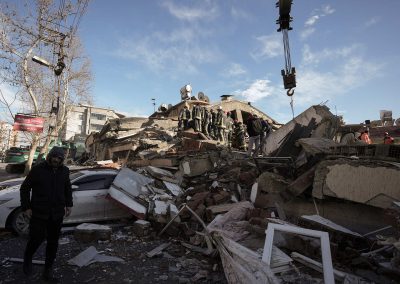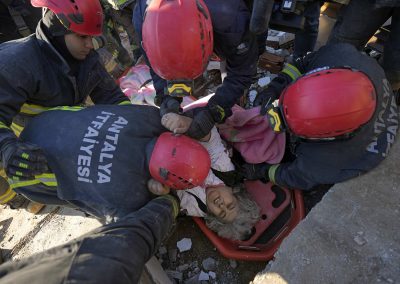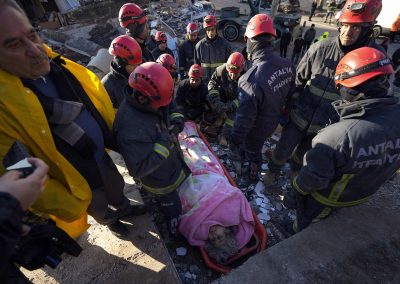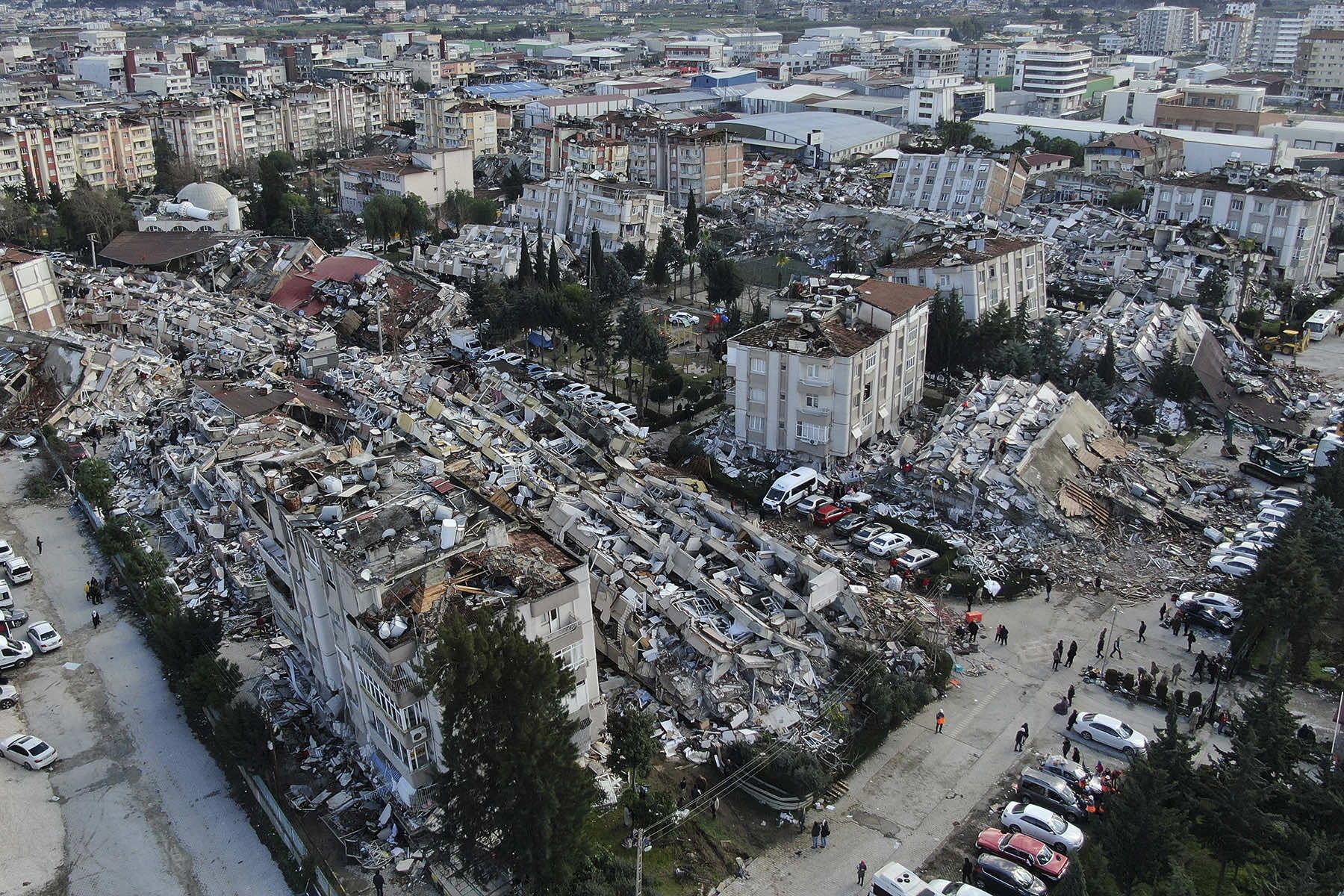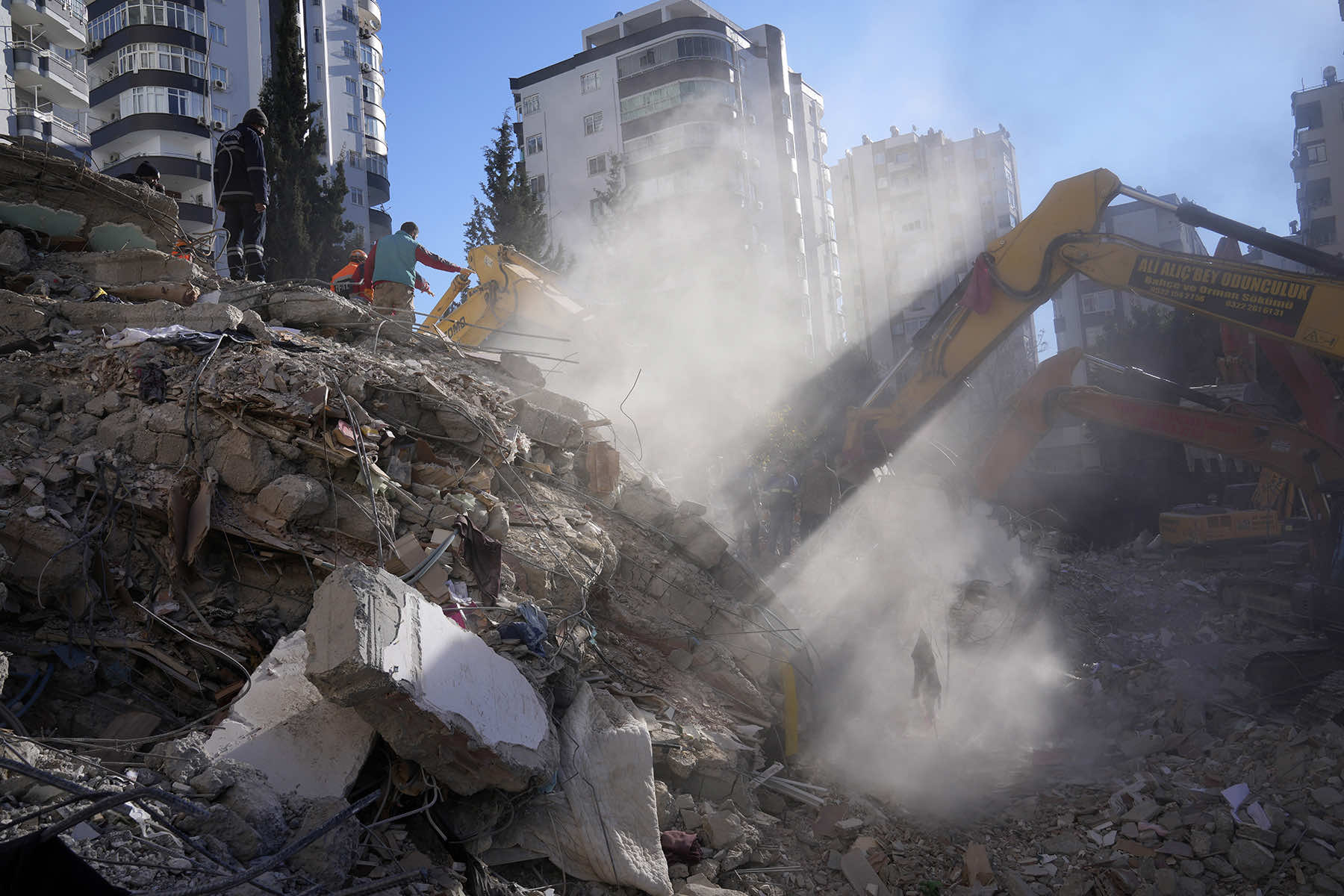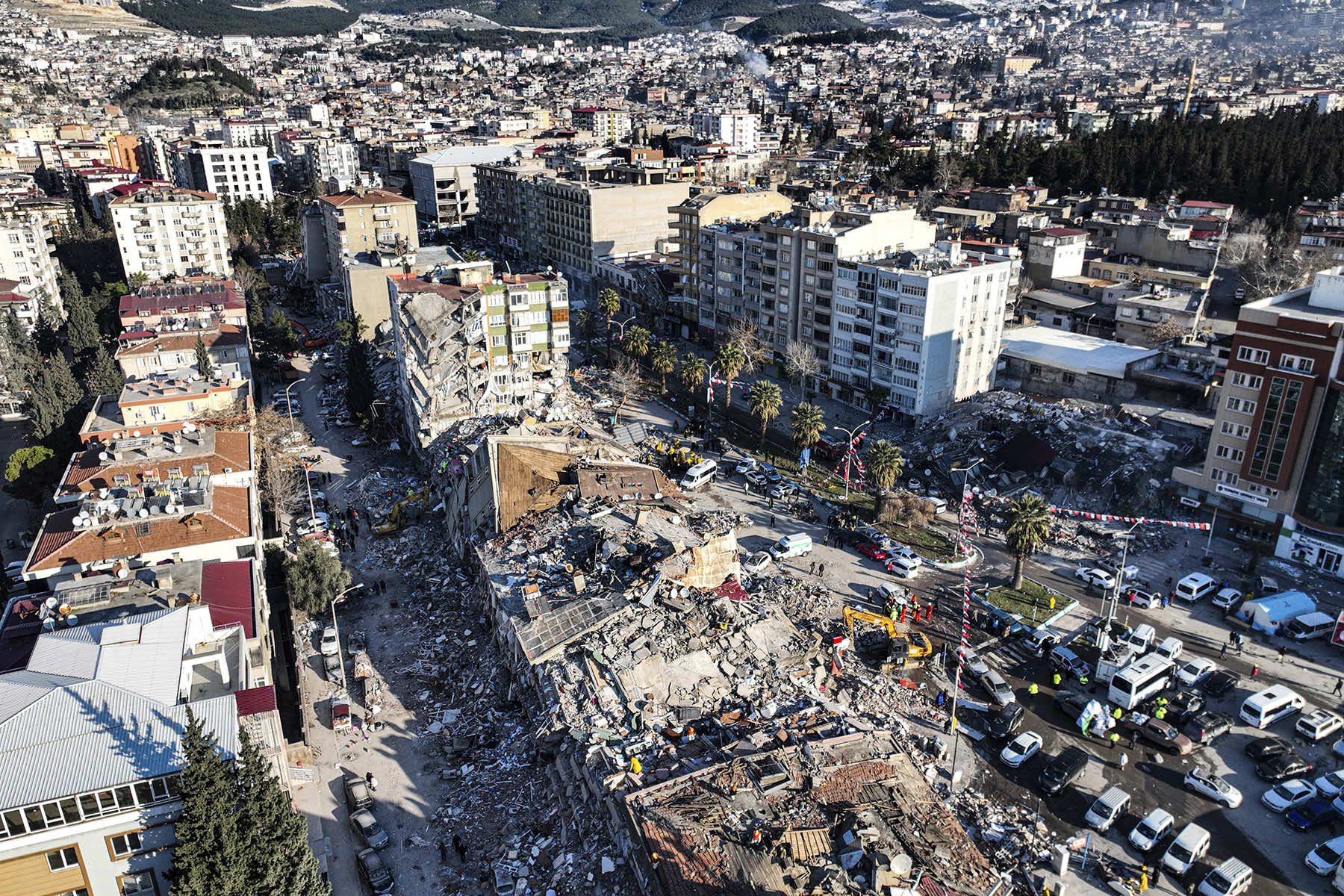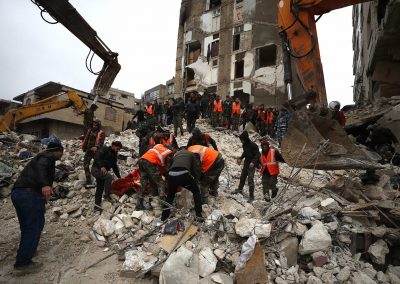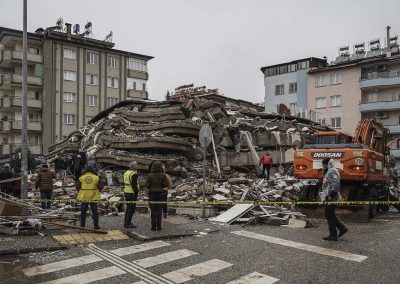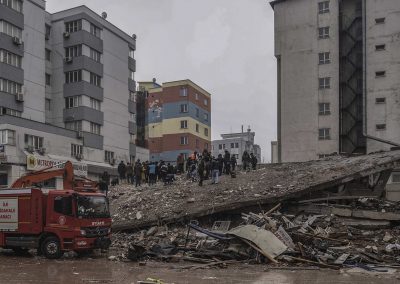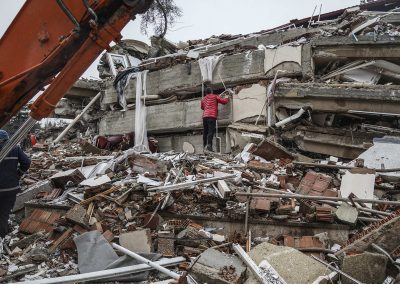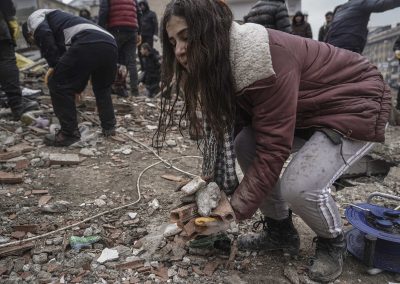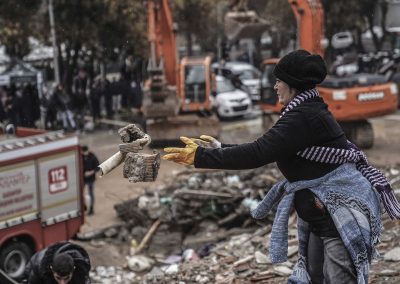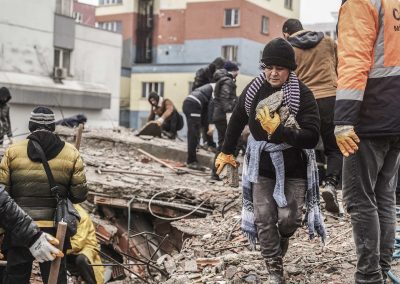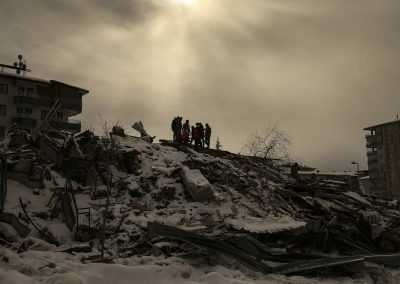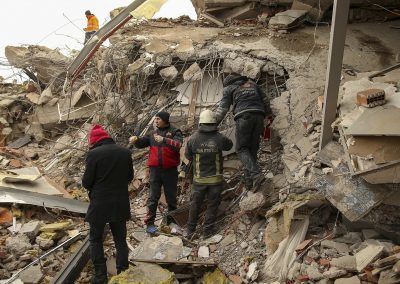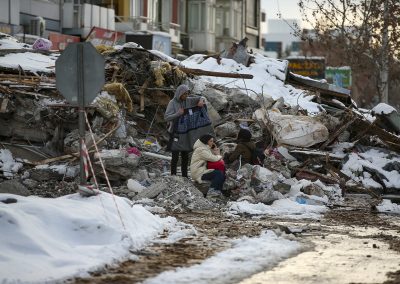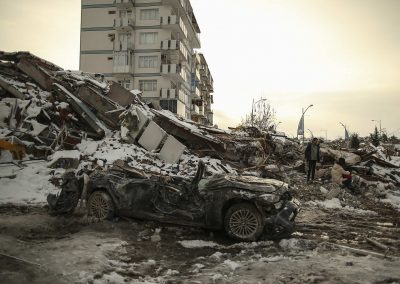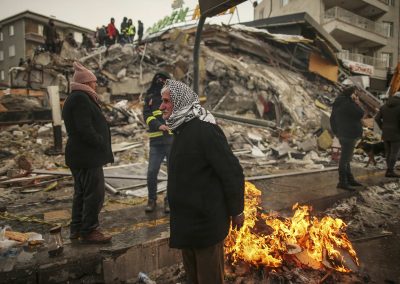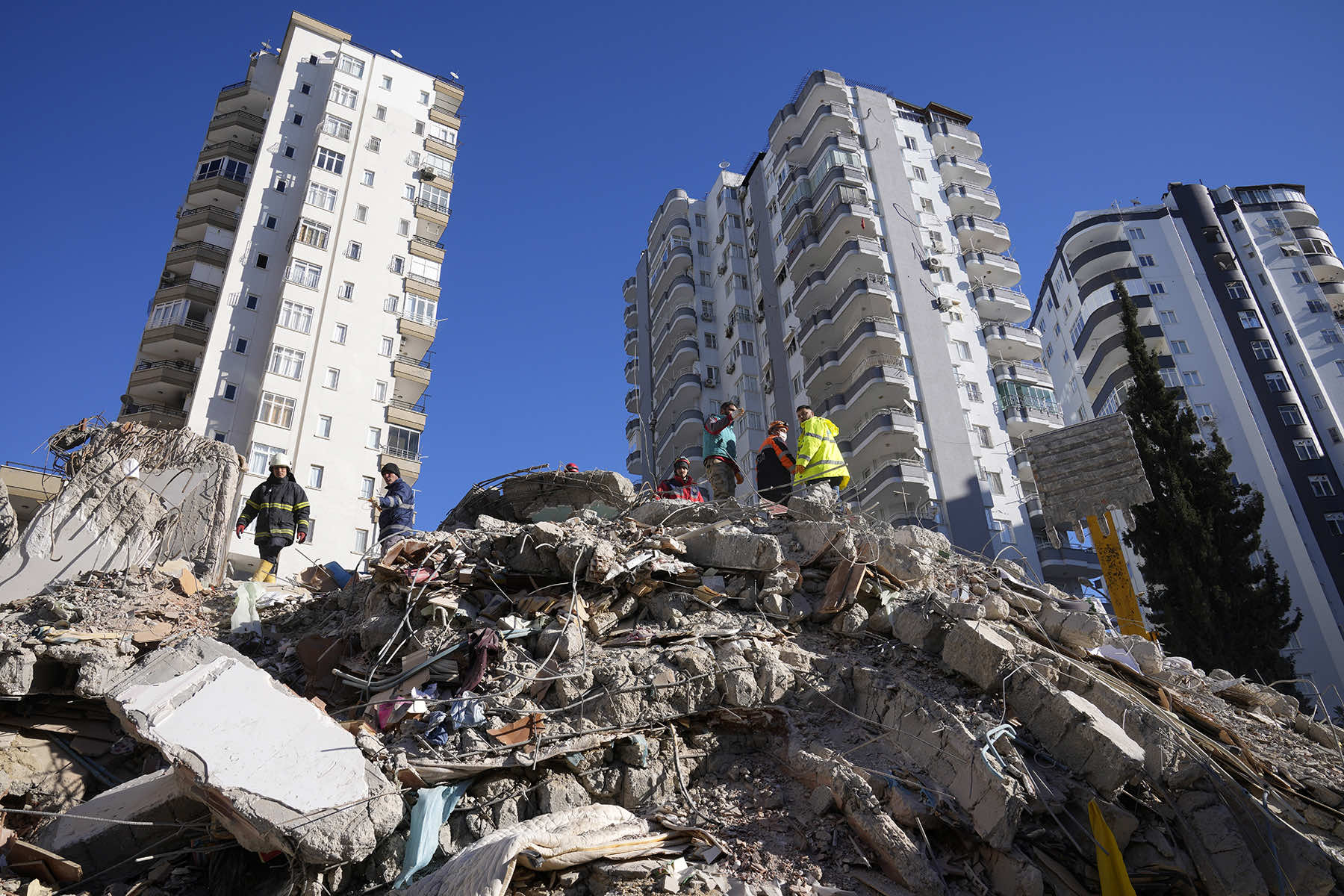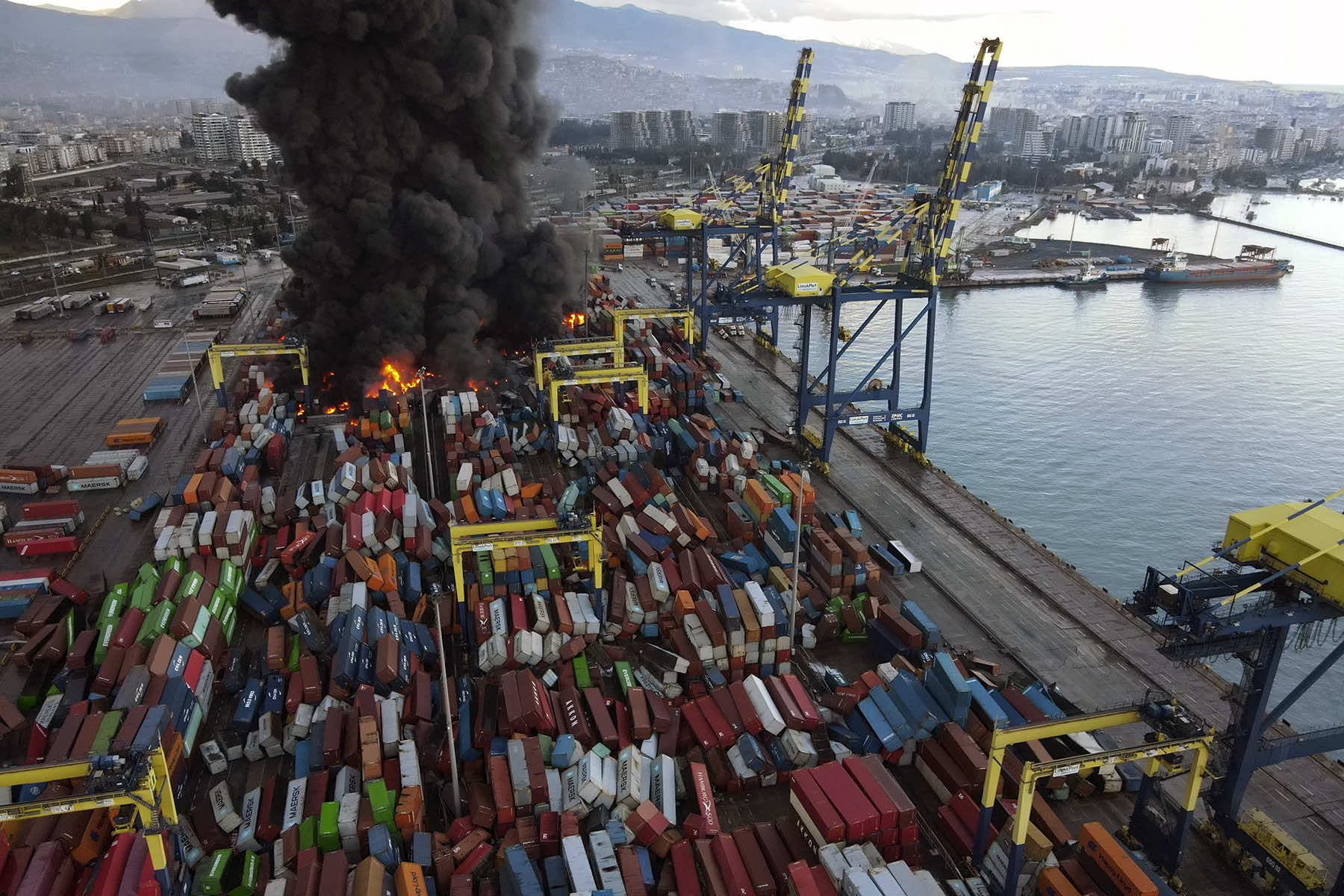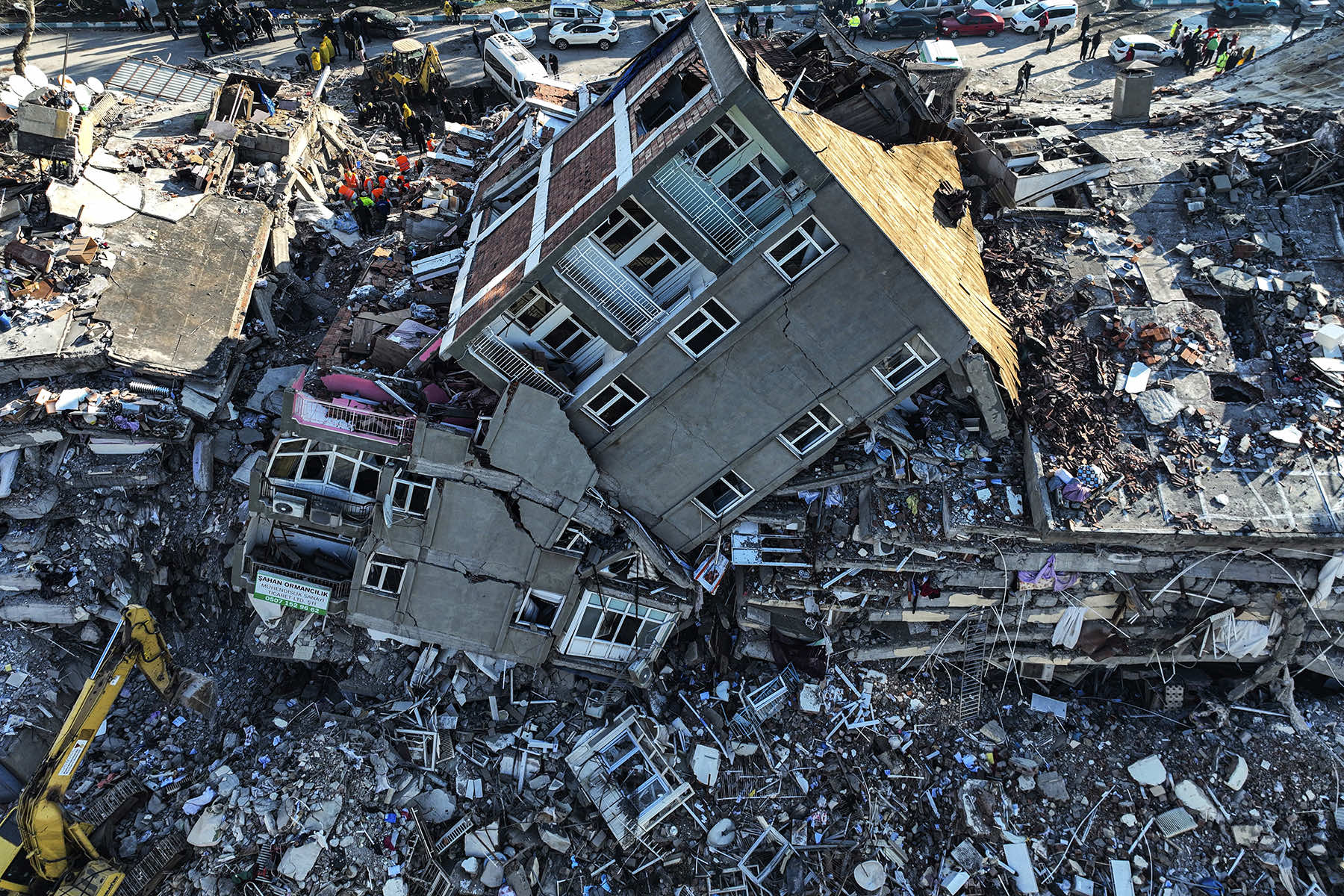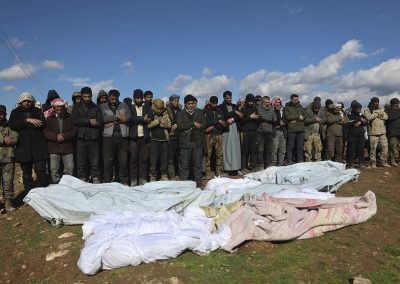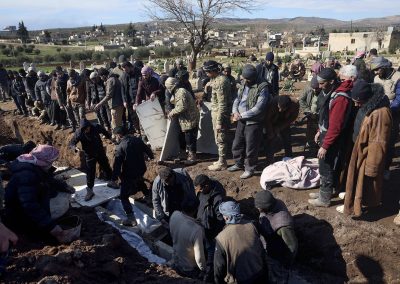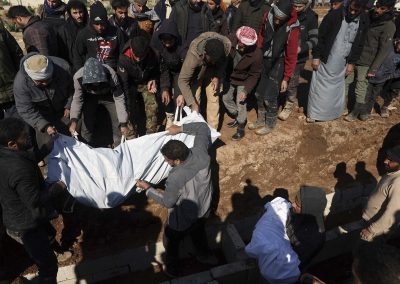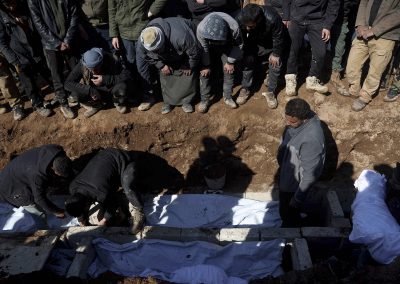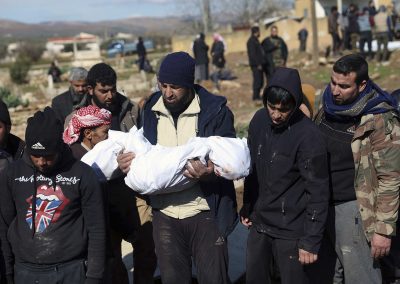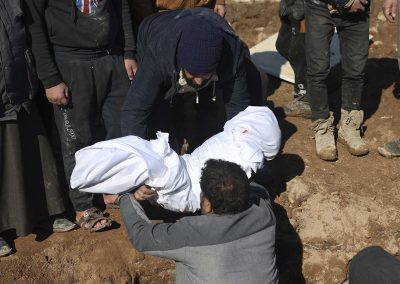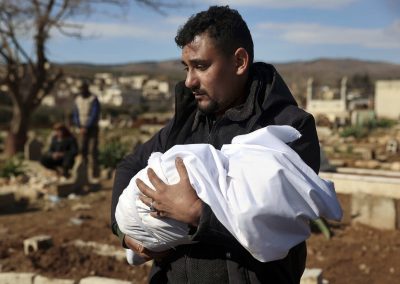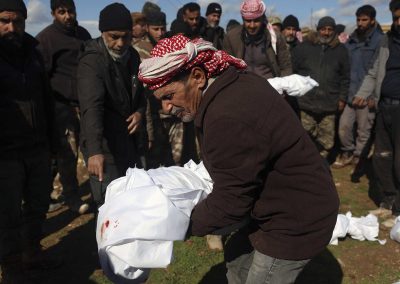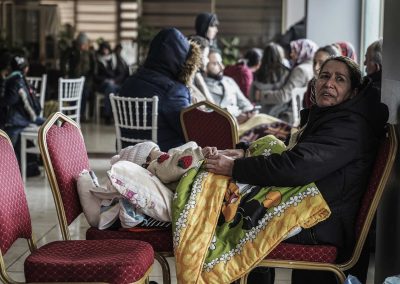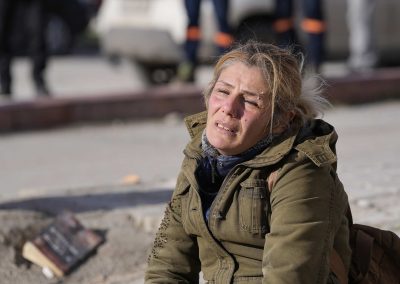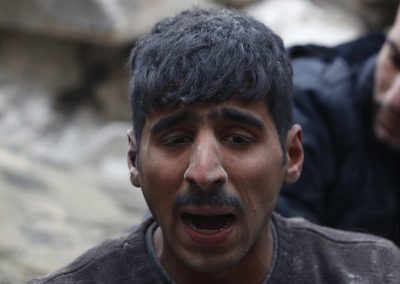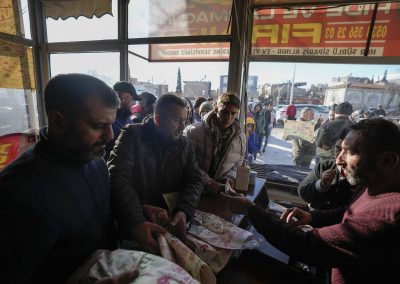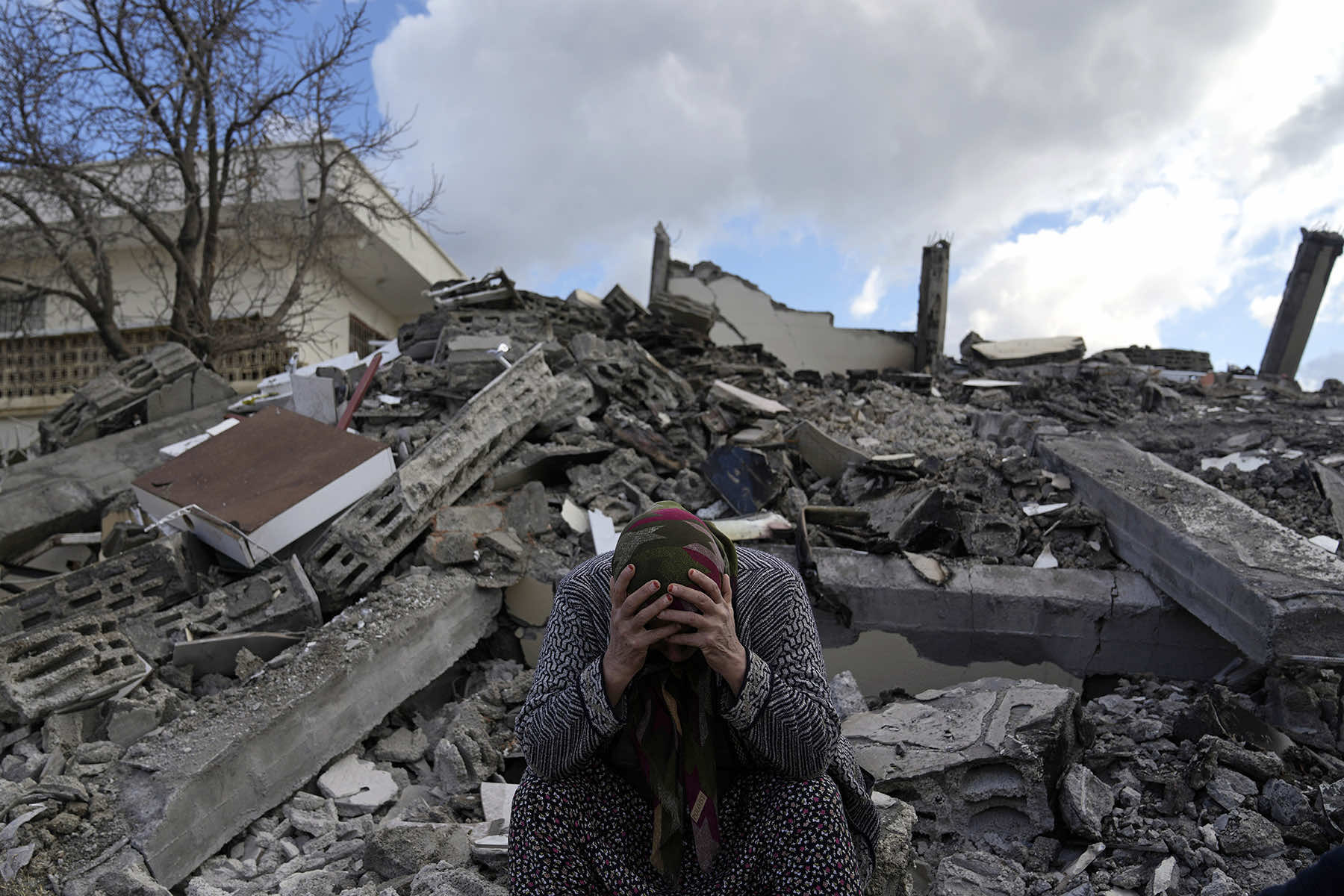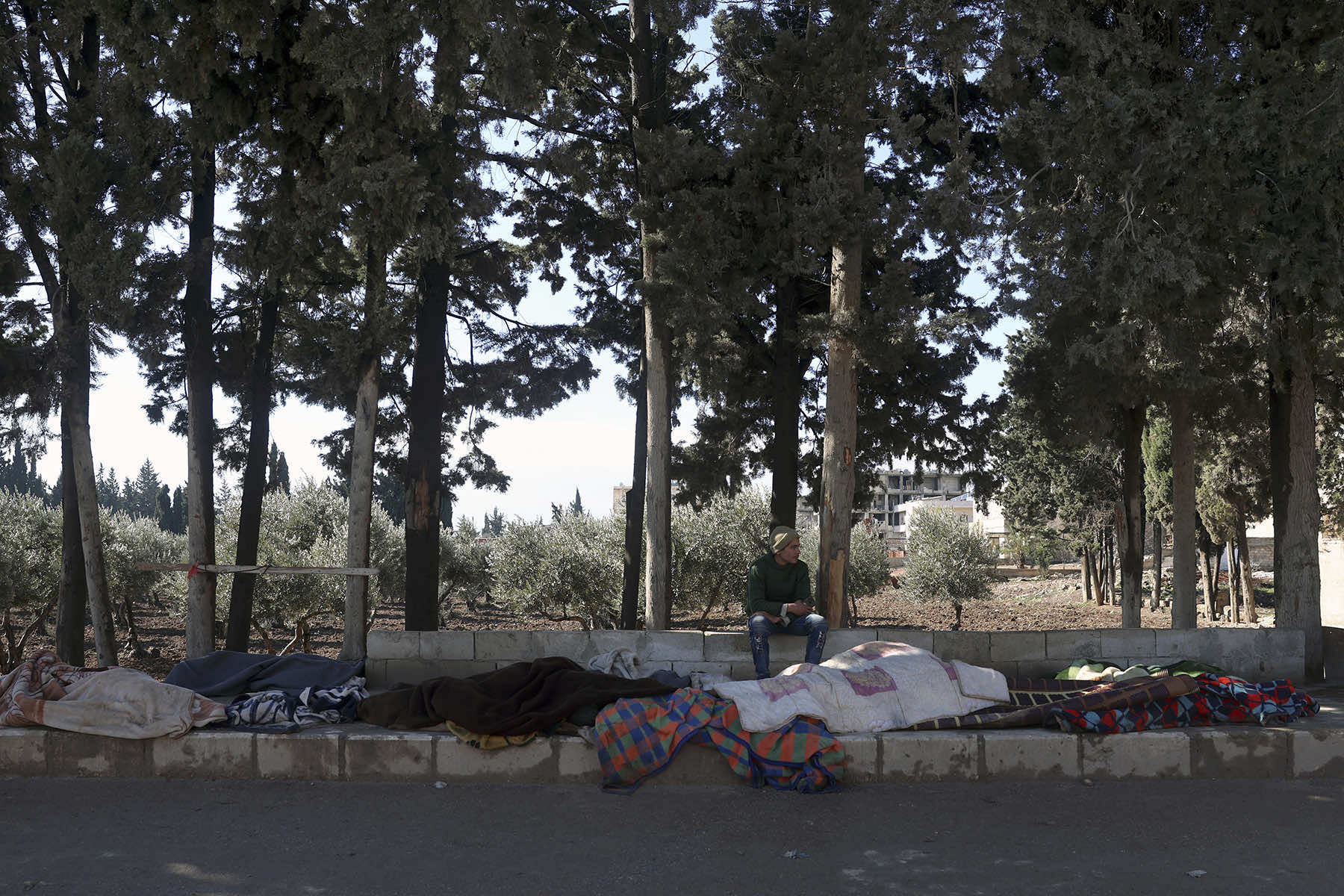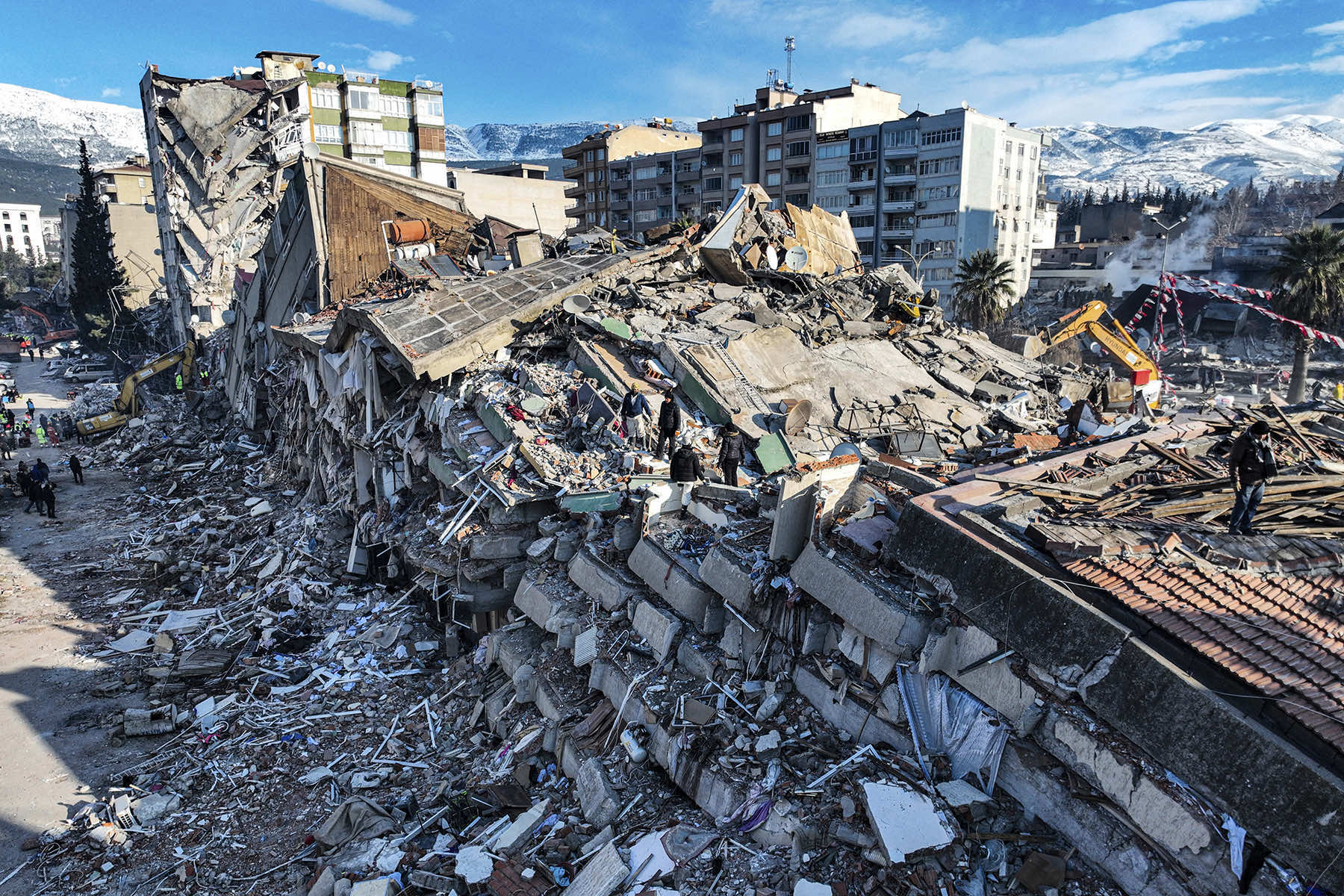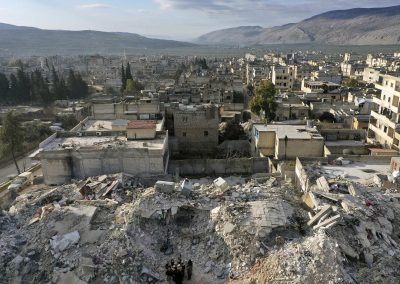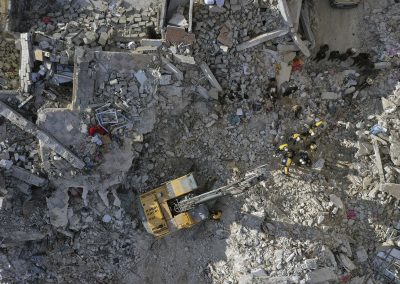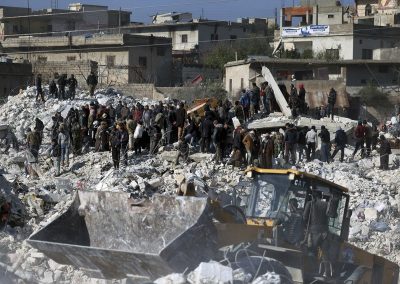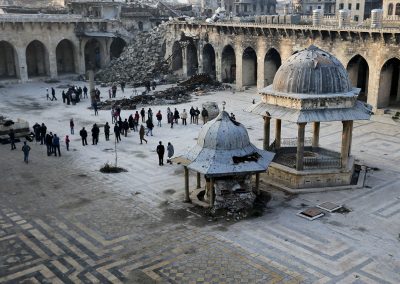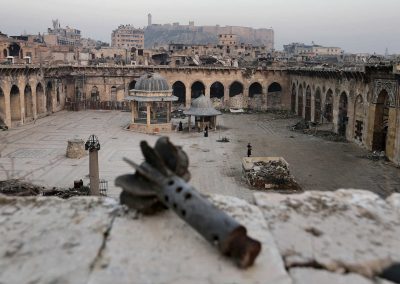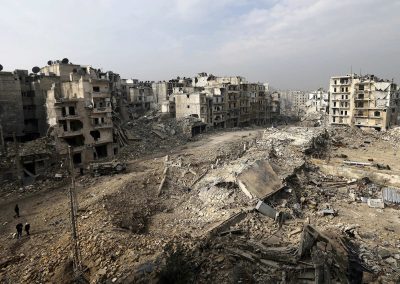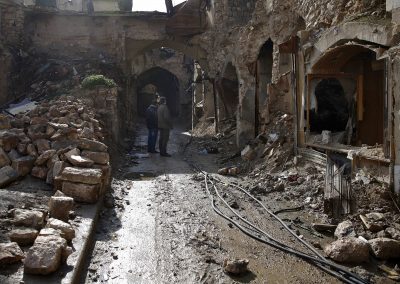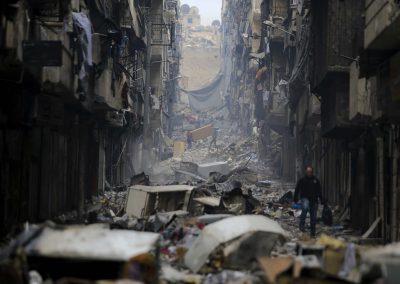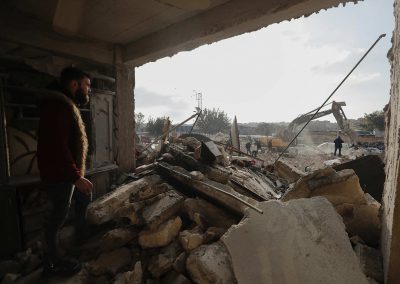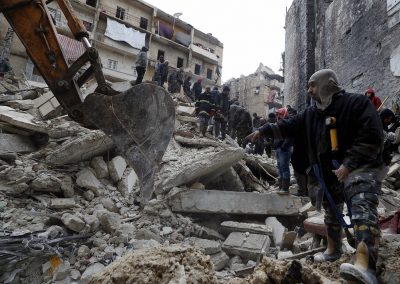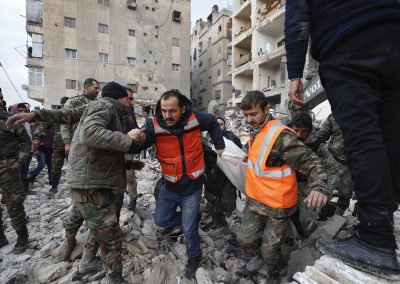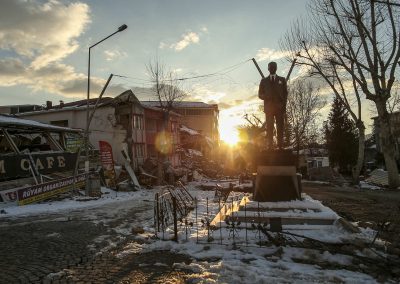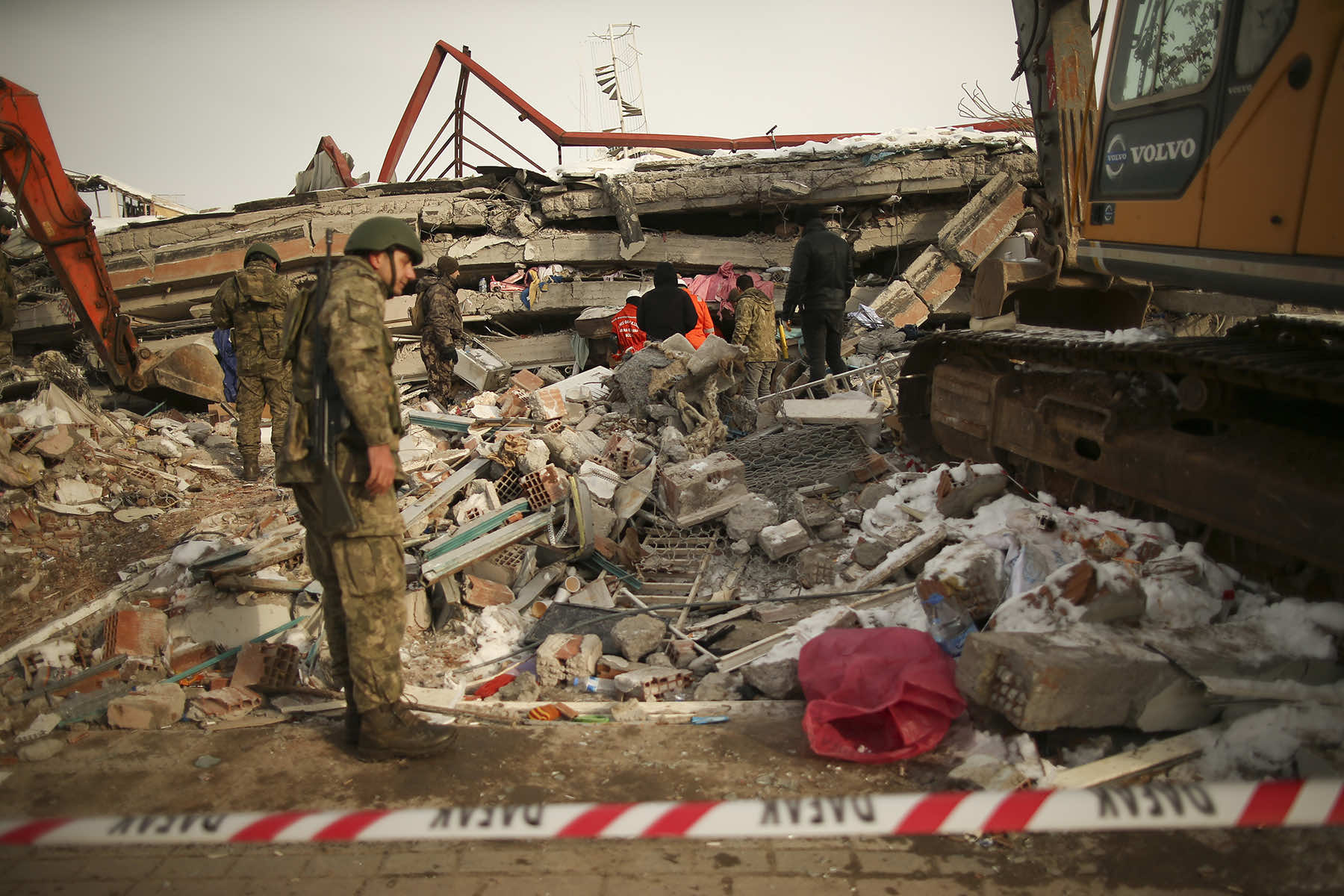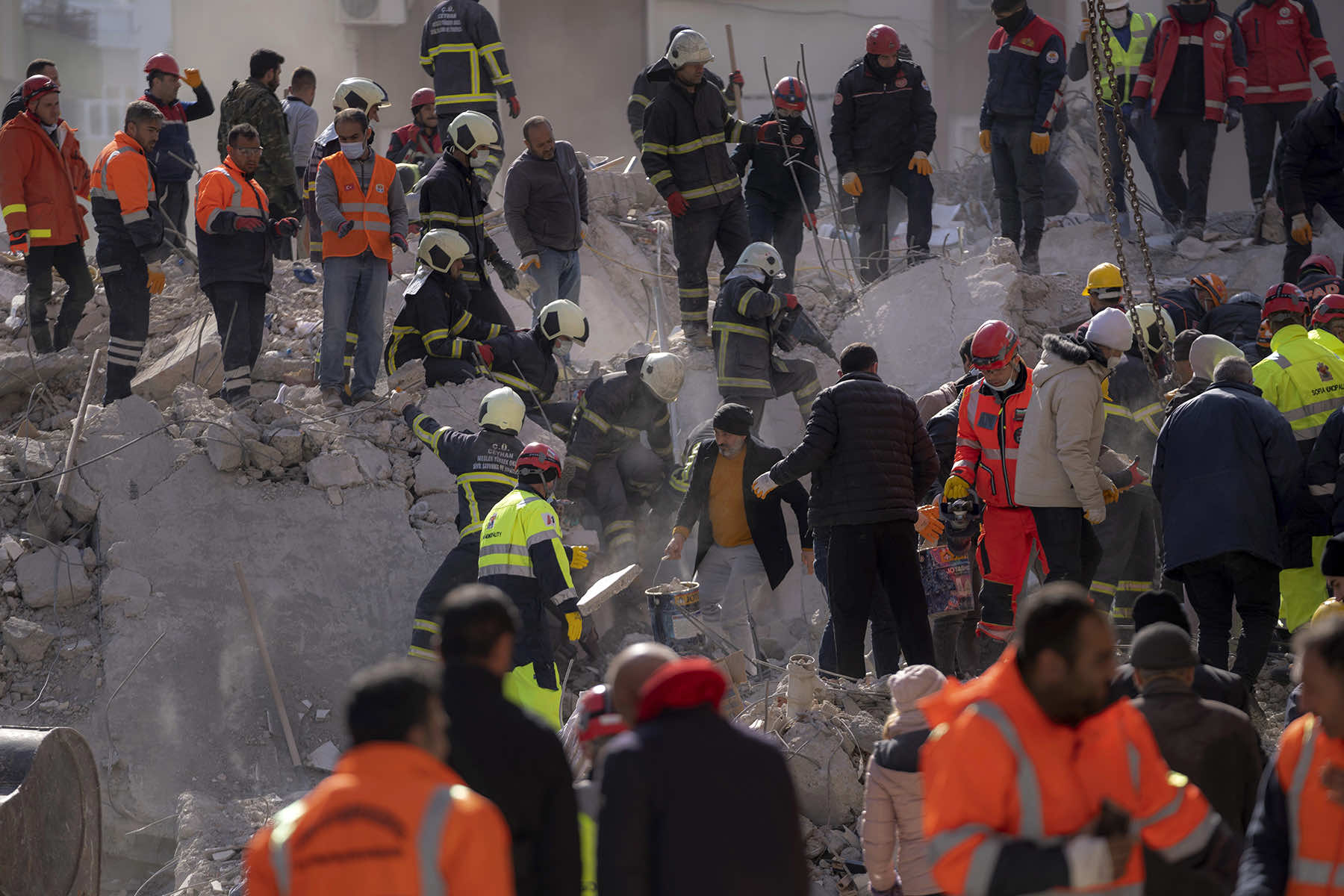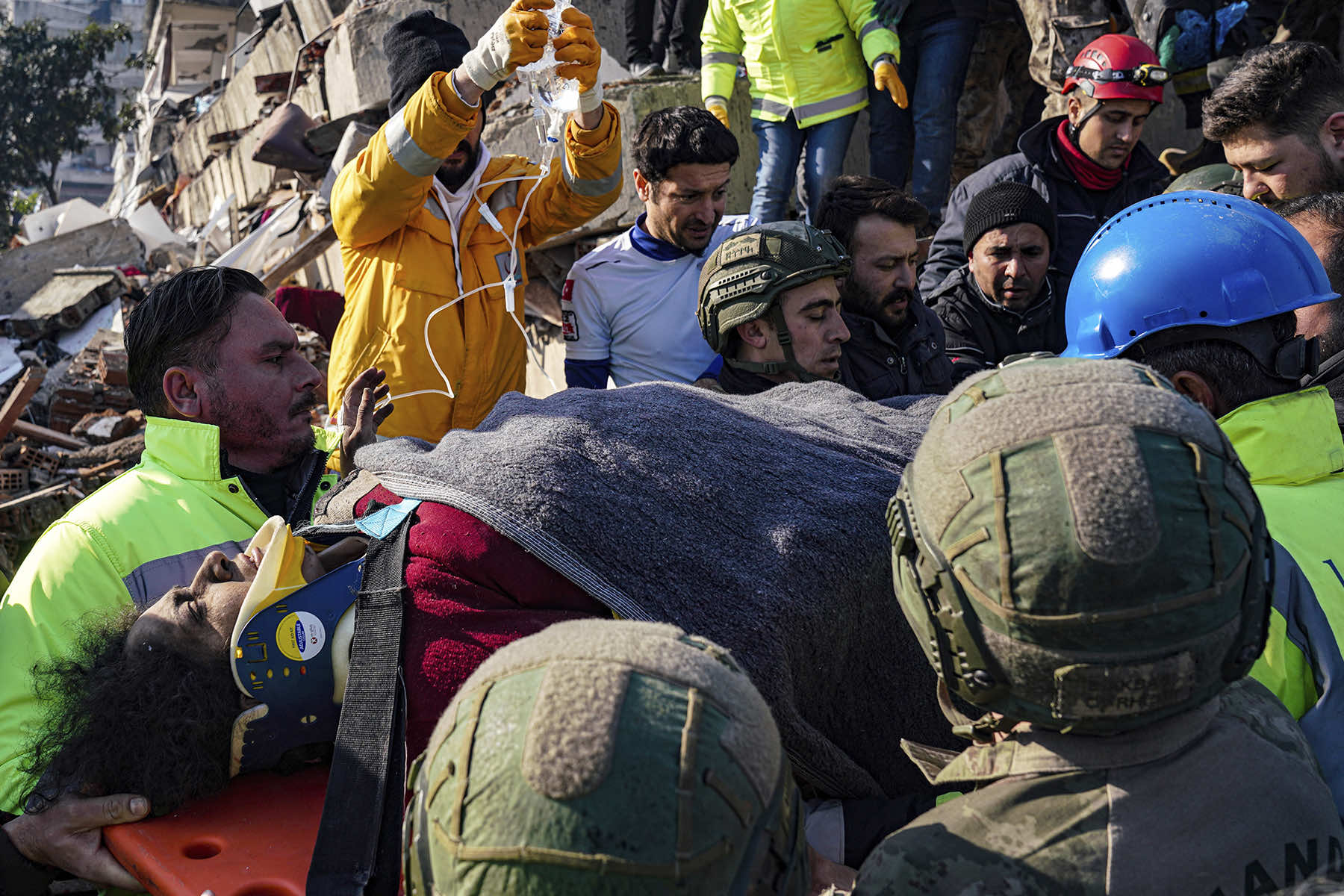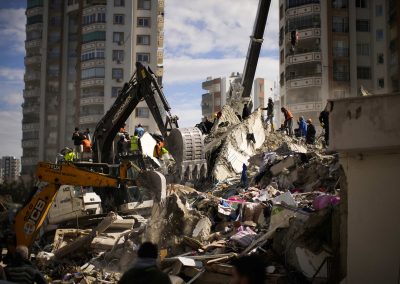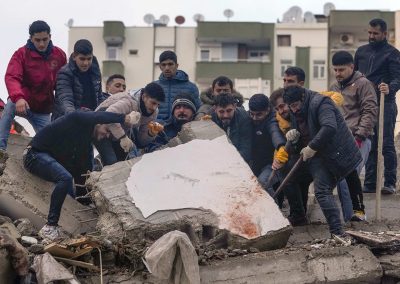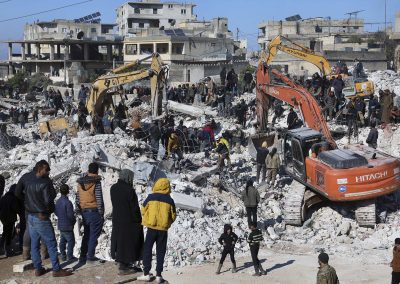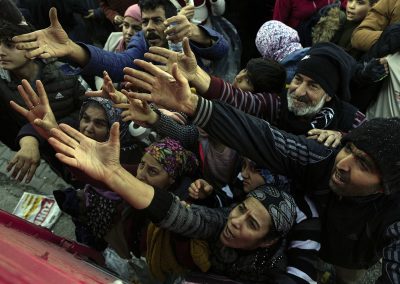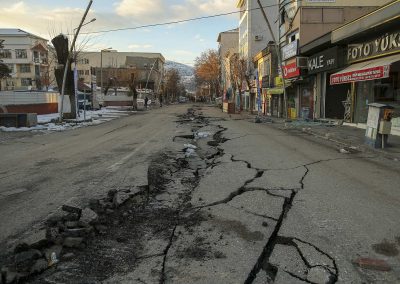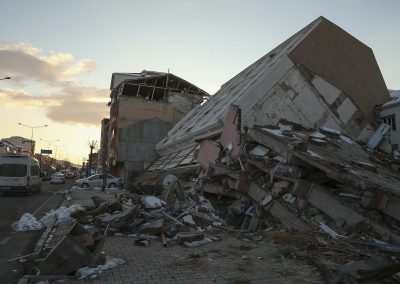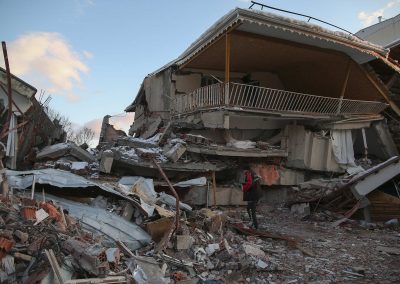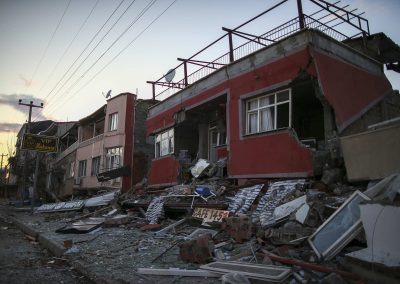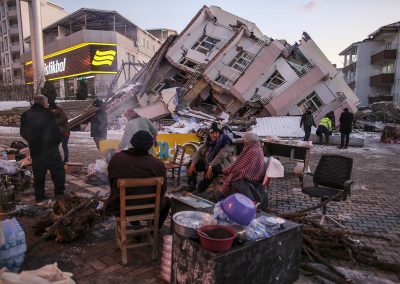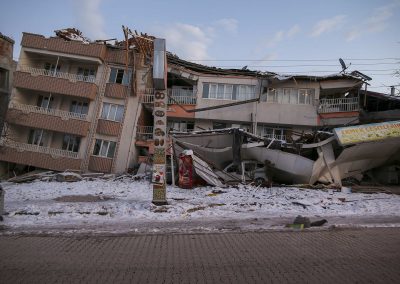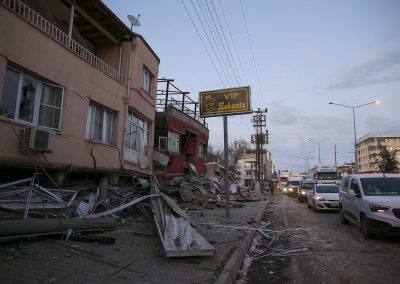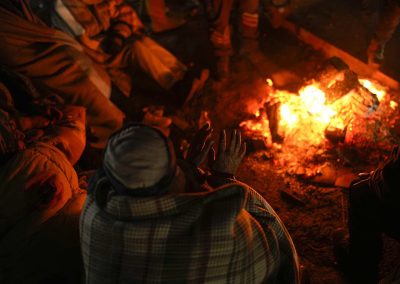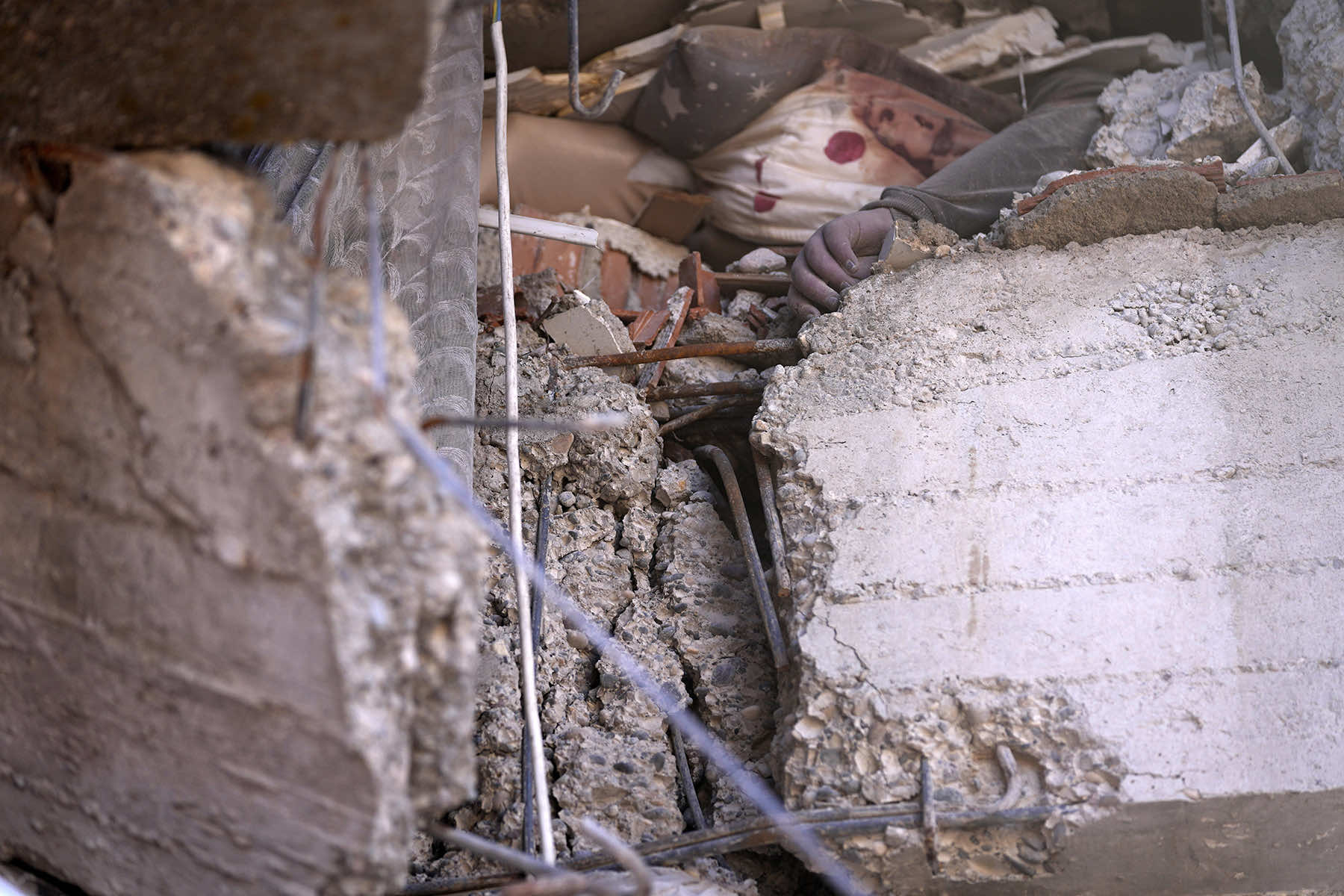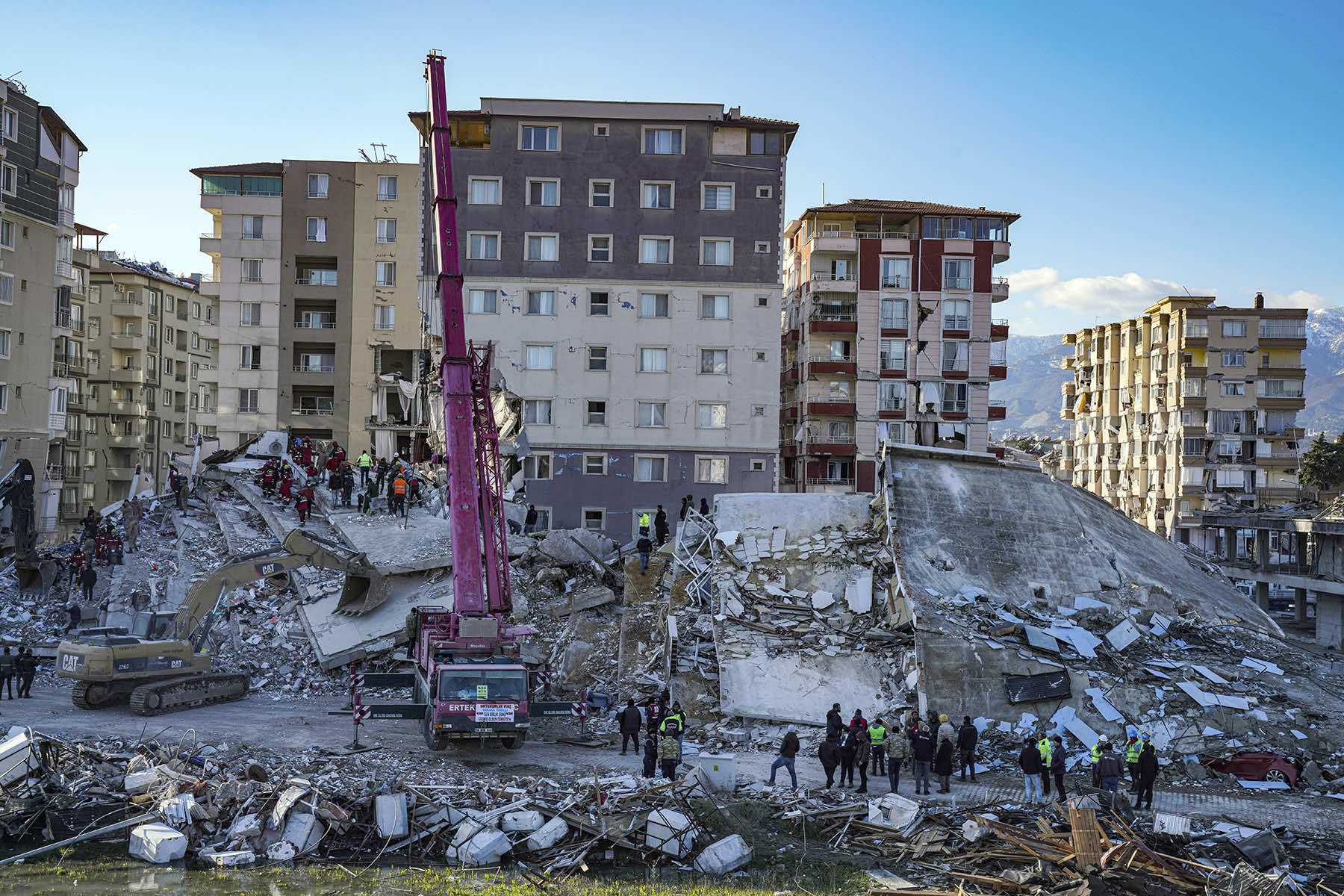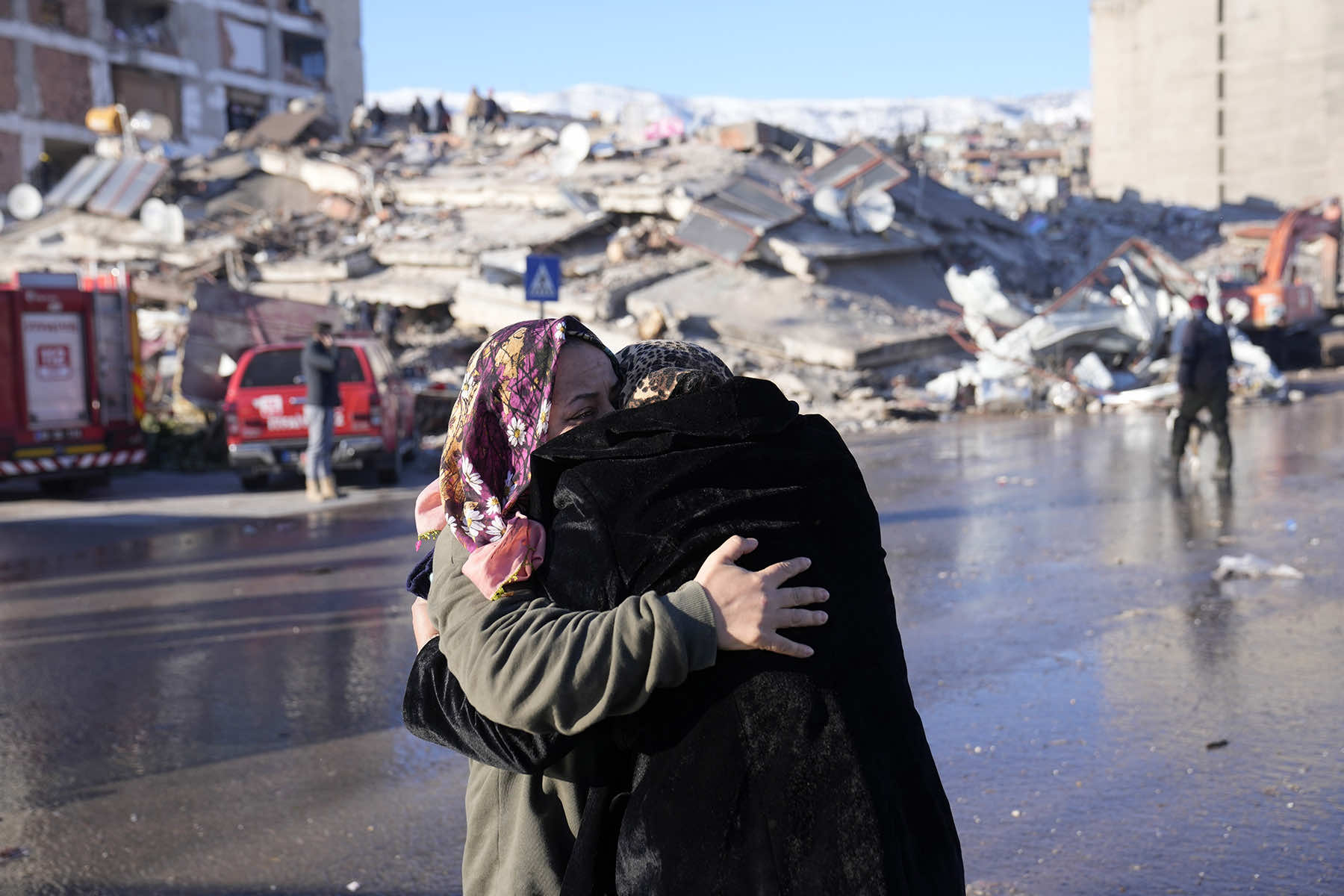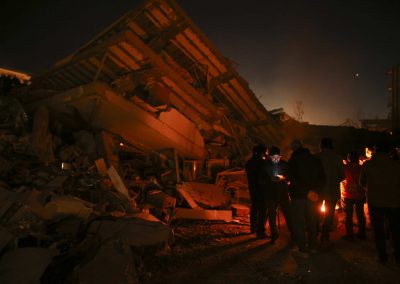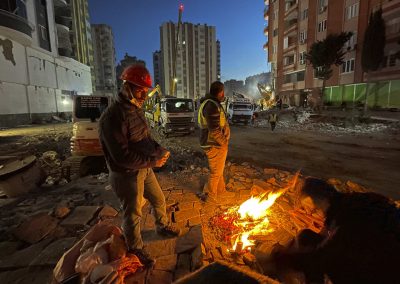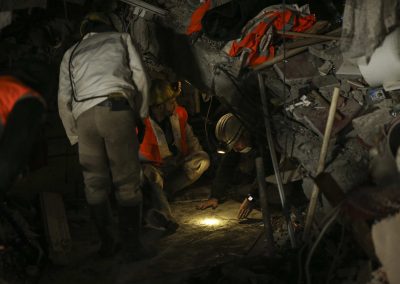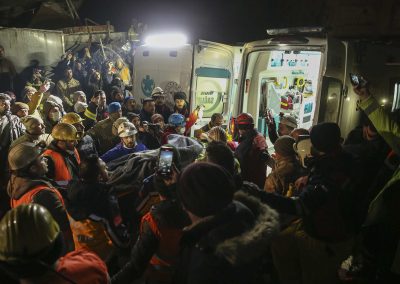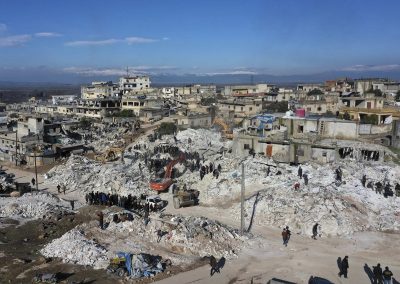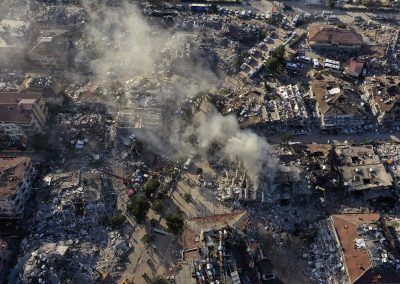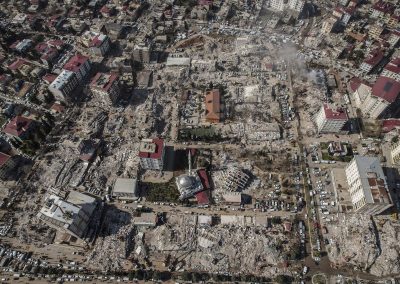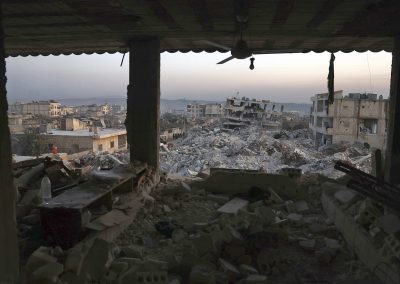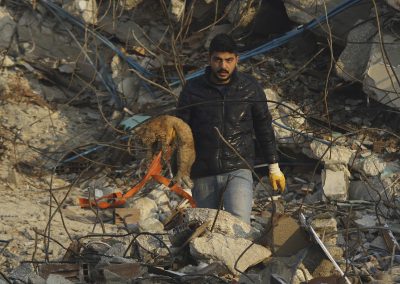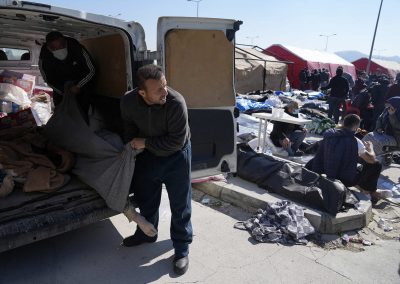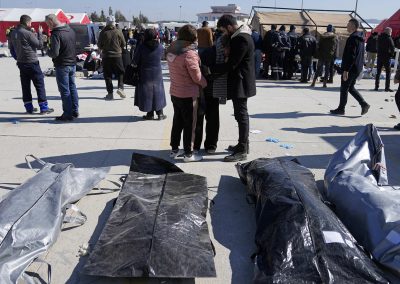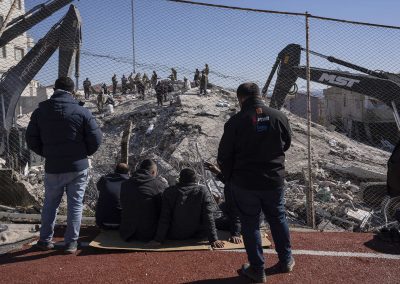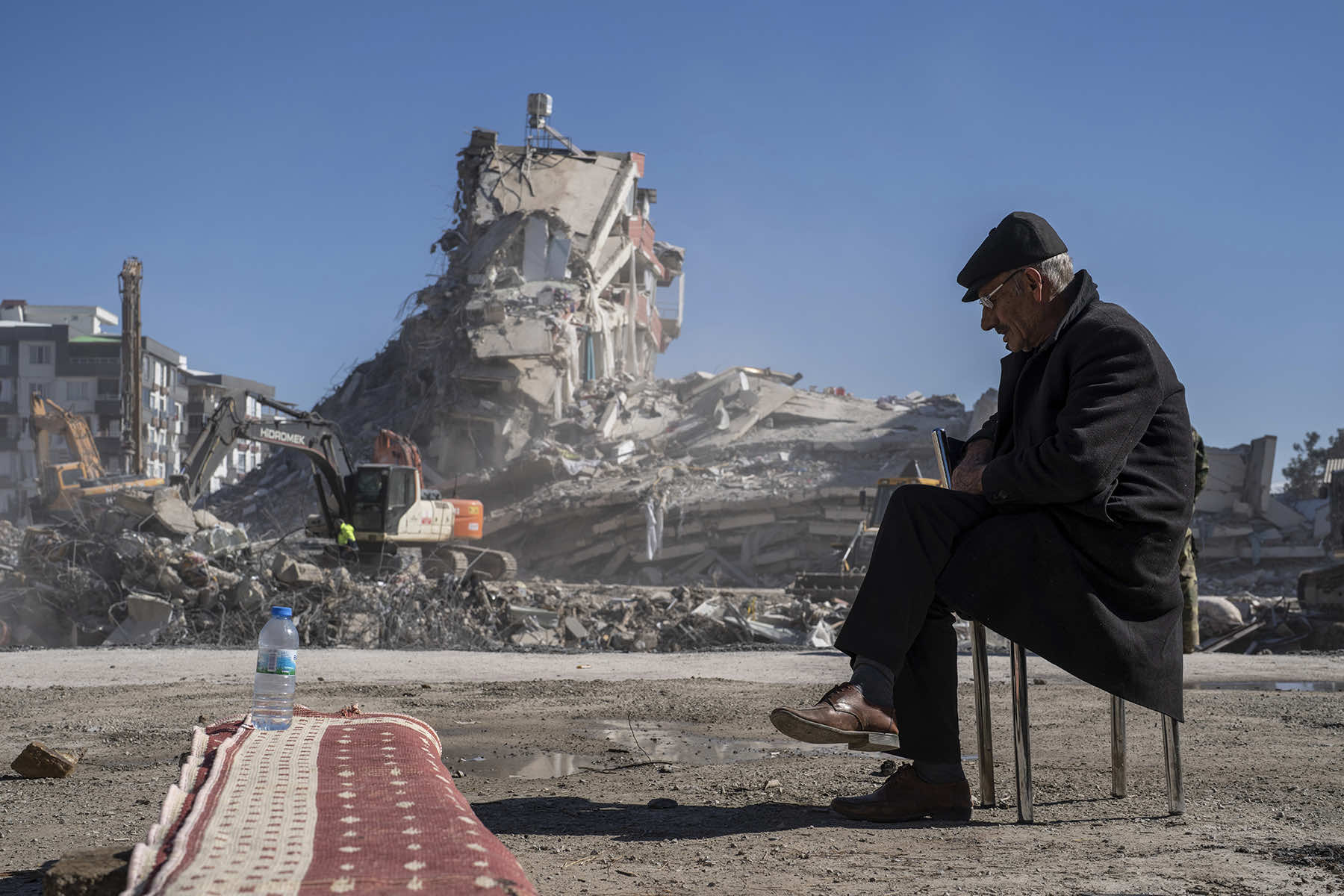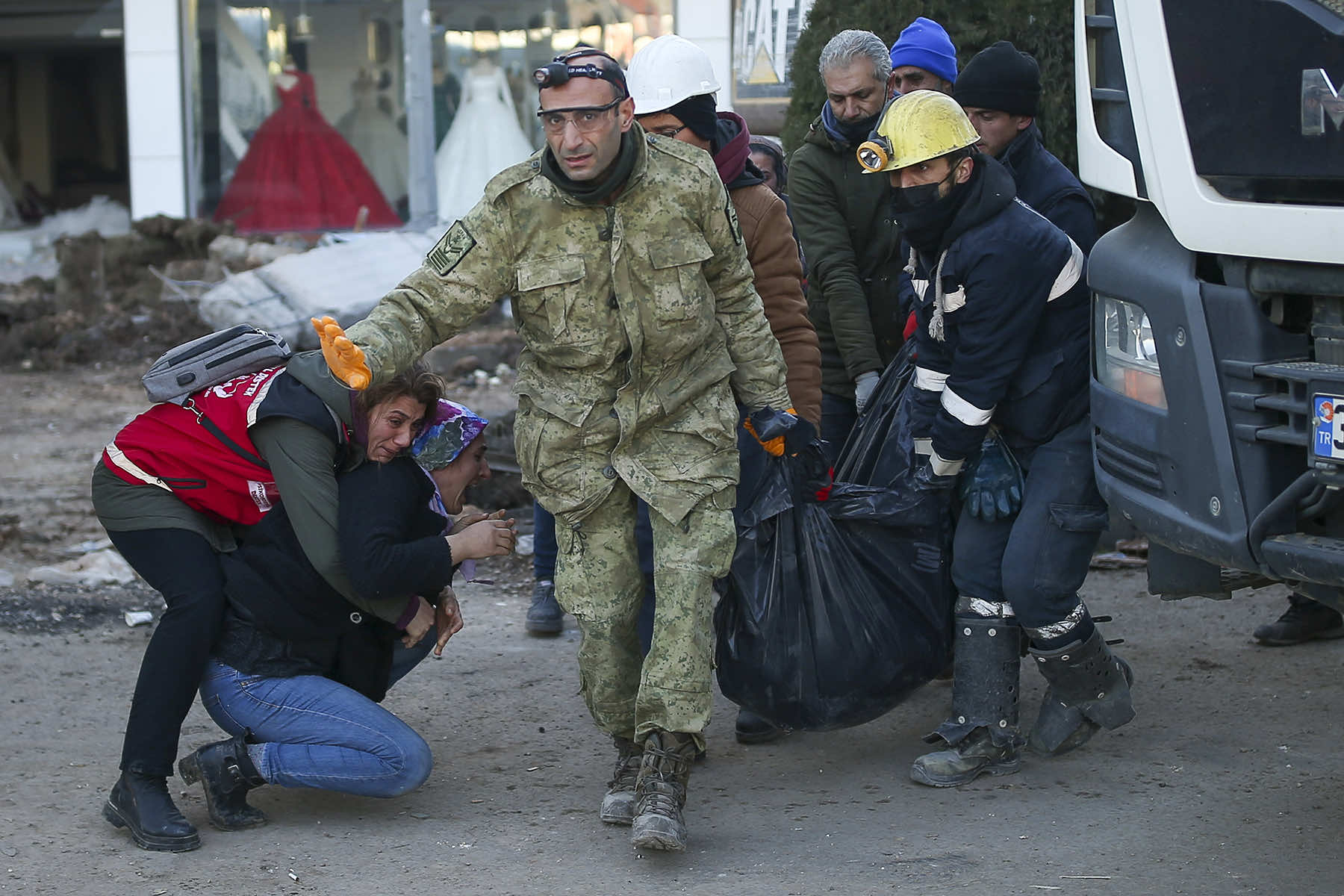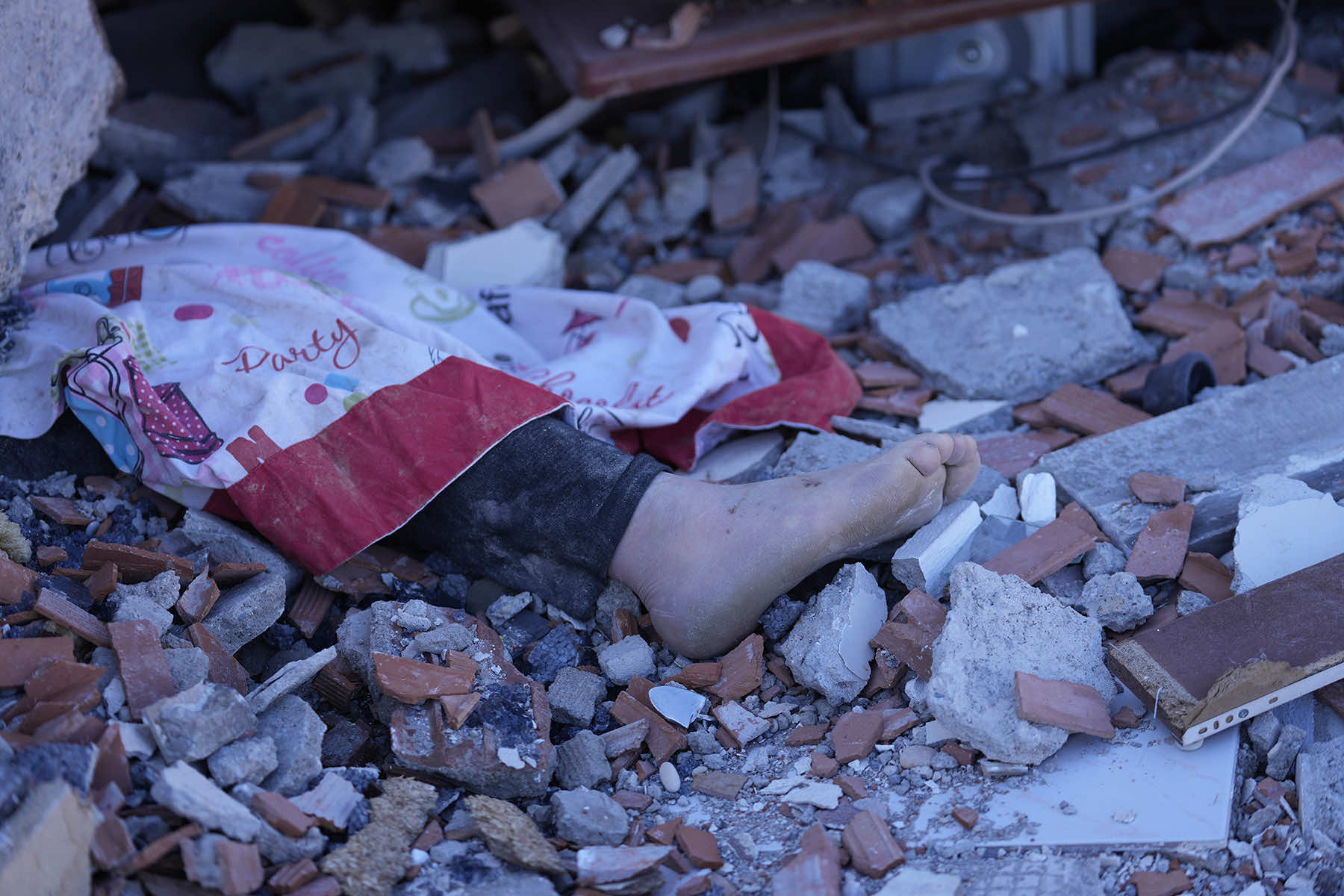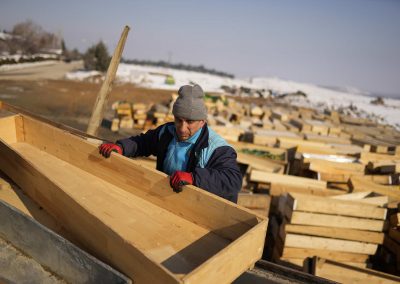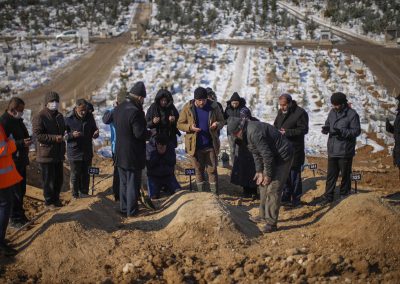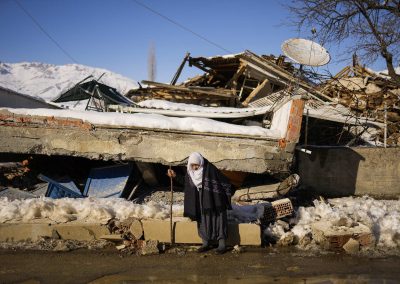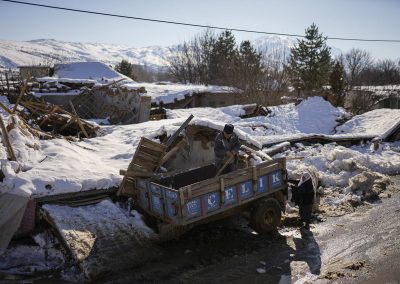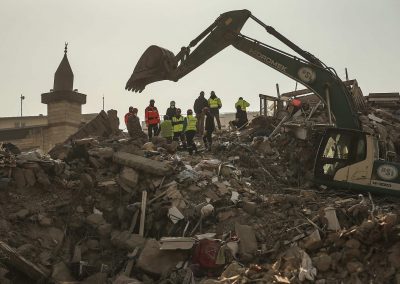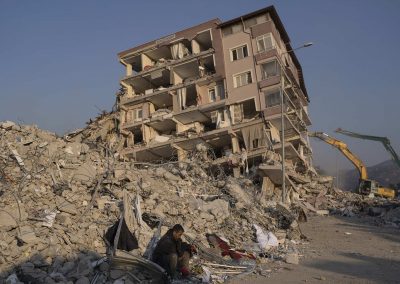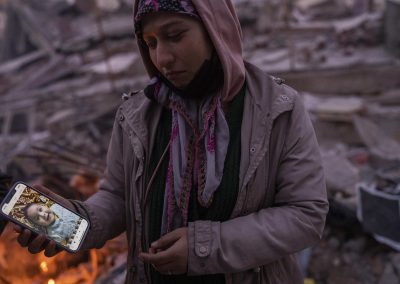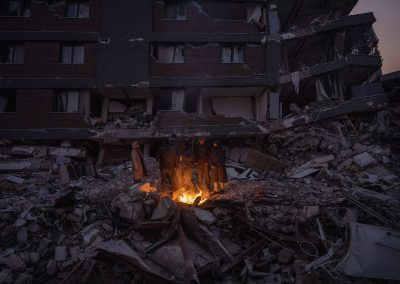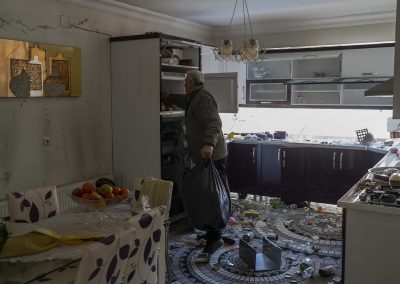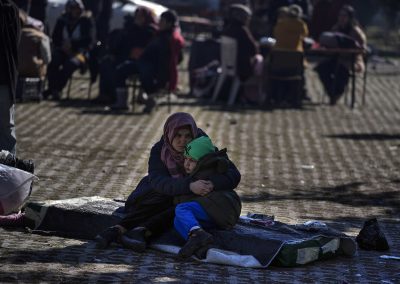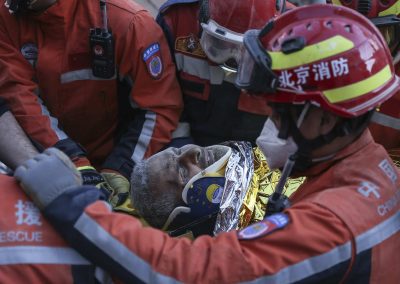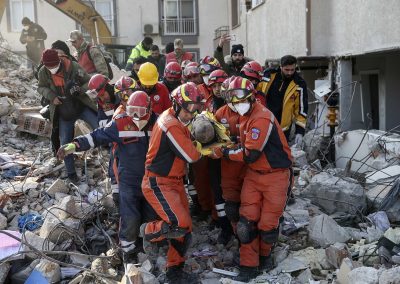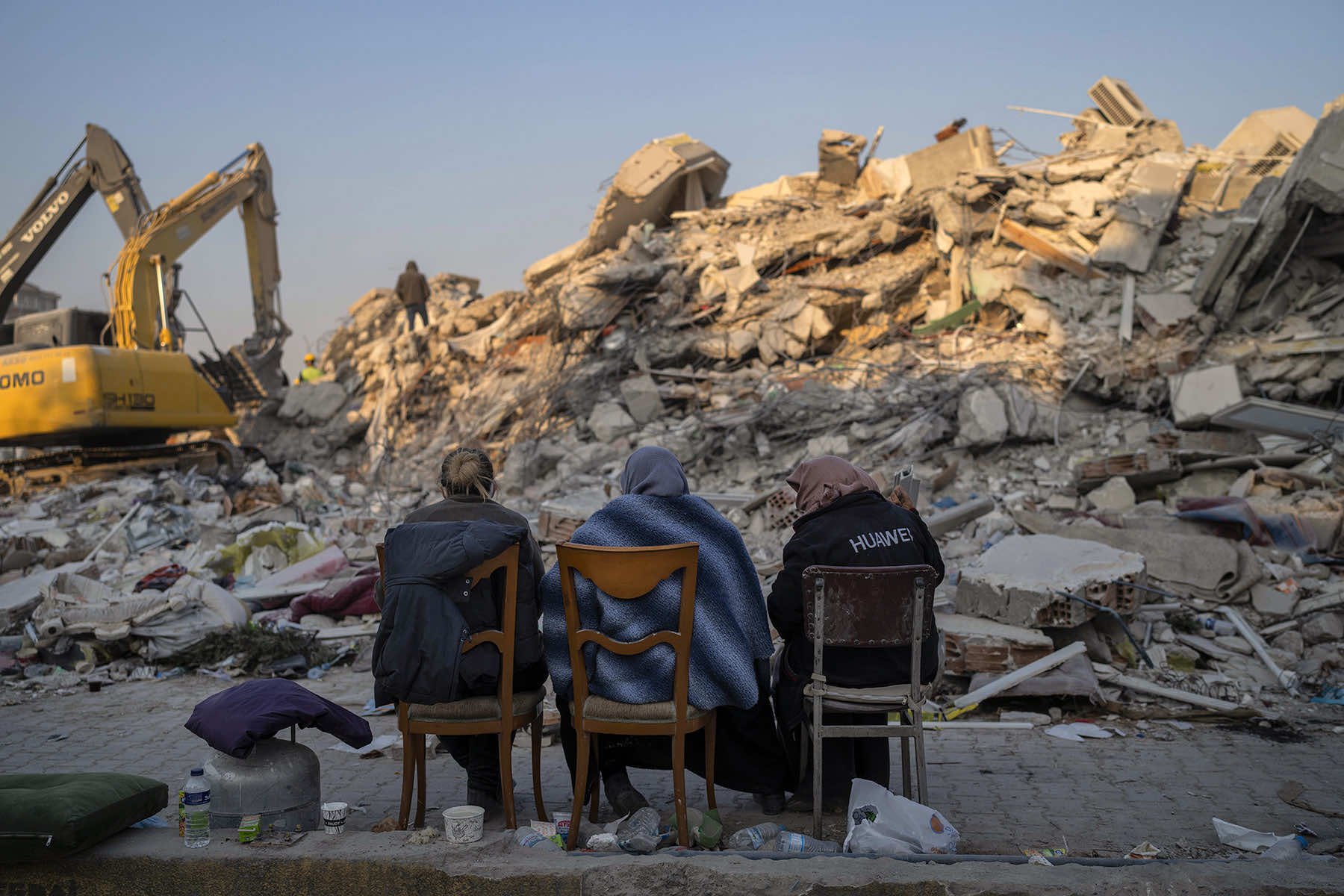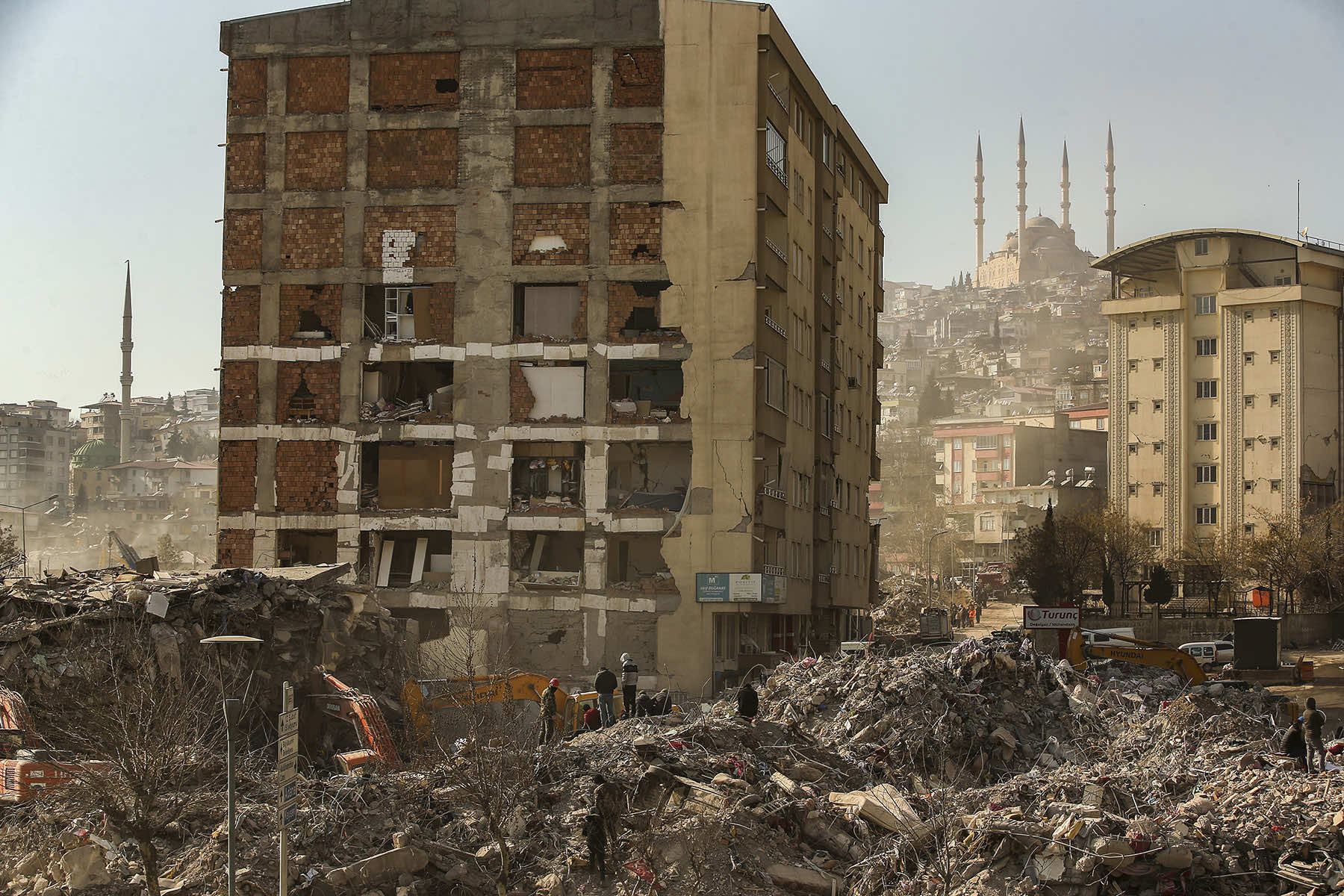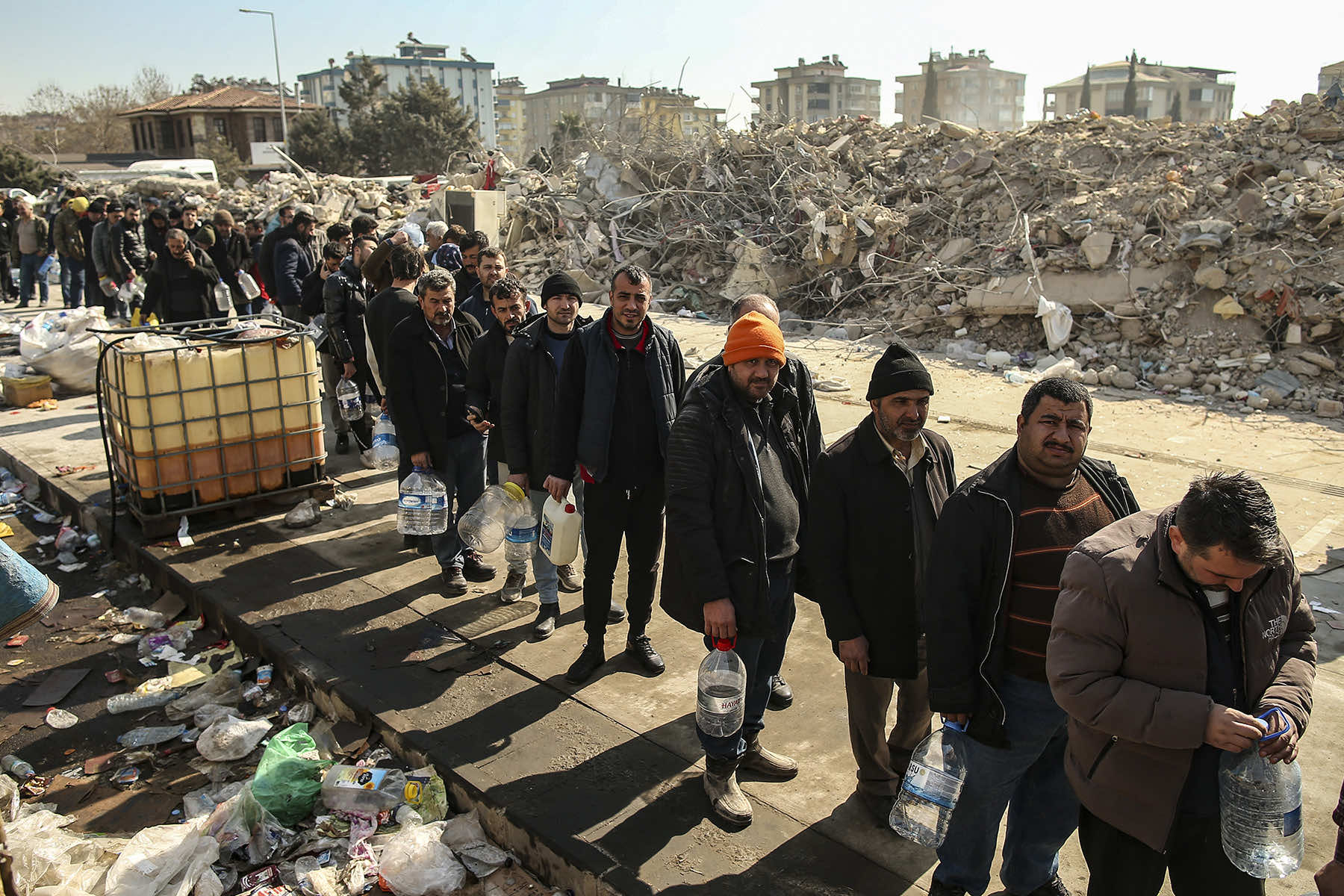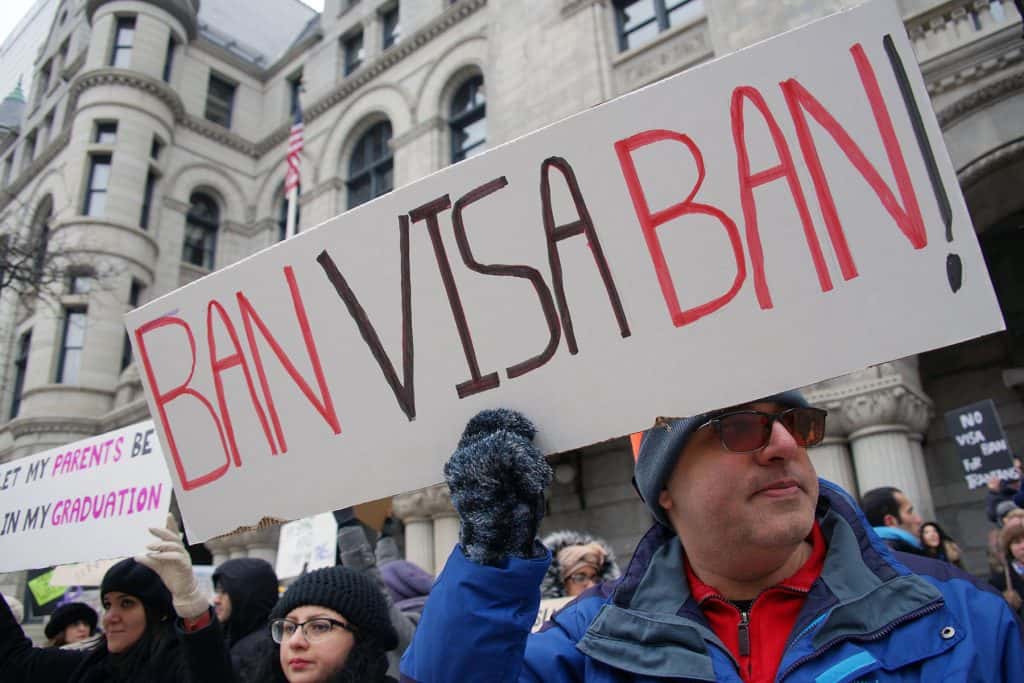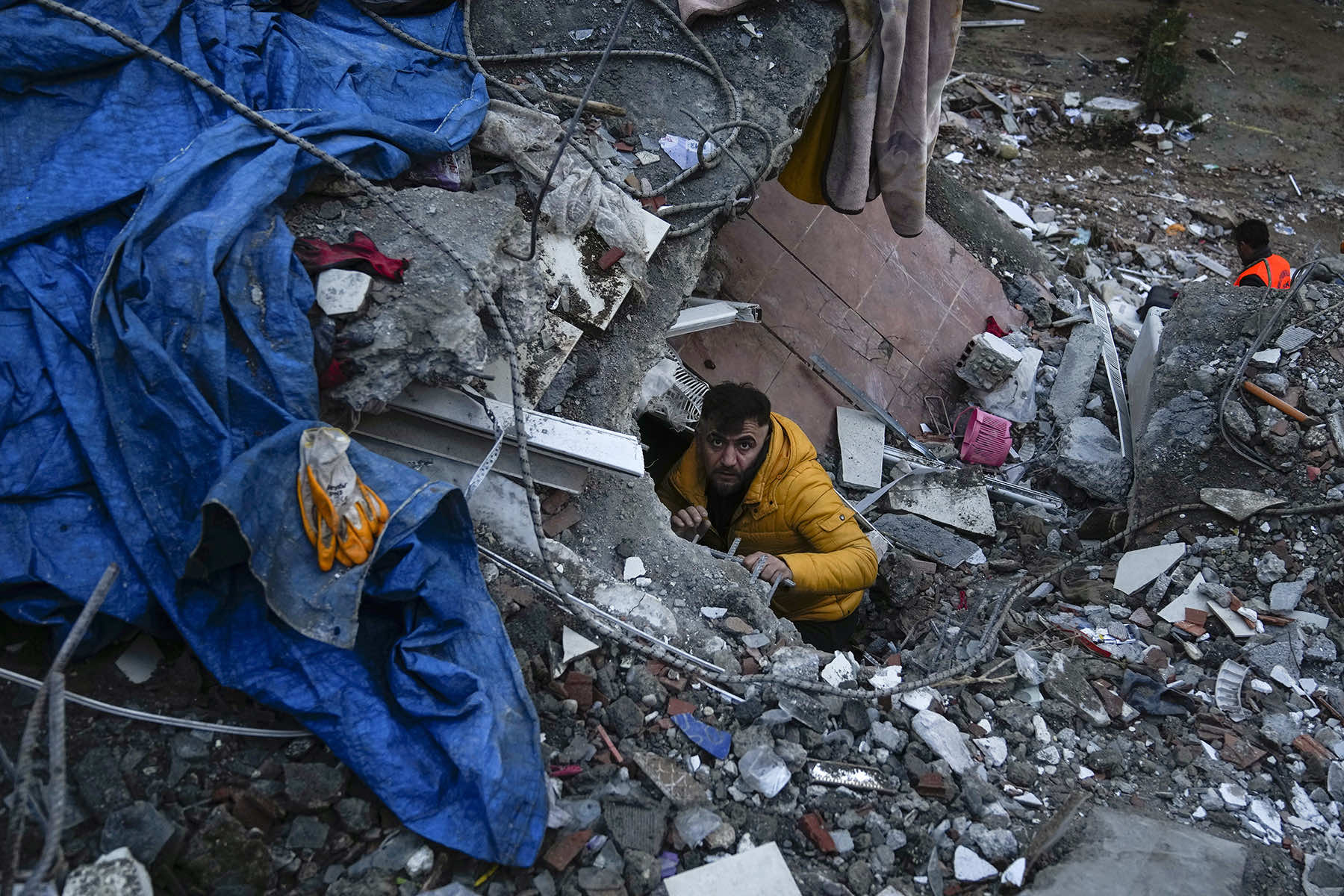
Medical Mission to Jordan: After more than a decade of Civil War in Syria, and continuing conflicts like the unprovoked Russian invasion of Ukraine that further displaced millions of civilians, understanding the longterm conditions that war refugees face remains relevant. But as public attention fades, such topics do not capture headlines today, even as the impact continues to be felt here in Milwaukee. mkeind.com/jordanmedicalmission
Rescue workers continue to help survivors from the devastating 7.8 magnitude earthquake that struck Syria and Türkiye on February 6, as the death toll exceeded 40,000 and surpassed Japan’s Fukushima disaster. Close to a half million people remain homeless, with nearly 100,000 injured. Yet even that total was expected to climb dramatically as freezing weather and multiple aftershocks hampered the rescue efforts, despite rapid international assistance.
Members of the Syrian American Medical Society (SAMS) were on the ground in Syria, responding to the aftermath of earthquake. In the early hours of the disasters, hospitals were overwhelmed with patients filling the hallways.
There was an immediate need for trauma supplies and a comprehensive emergency response to save lives and treat the injured. Using its international network, SAMS reached out to its healthcare partners and humanitarian stakeholders to deliver a coordinated intervention.
“Across our operational facilities, we received victims of the quake as they came into our hospitals. Simultaneously, we worked to guarantee the wellbeing of our over 1,700 staff in Syria, and 90 at the epicenter near Gaziantep, Türkiye,” said Dr. Amjad Rass, President of SAMS.
The United Nations said it was “exploring all avenues” to get supplies to rebel-held northwestern Syria, and it released $25 million from its emergency fund to help kick-start the humanitarian response in Türkiye and Syria.
“We call on all parties of the conflict in Syria to commit to a comprehensive ceasefire to enable humanitarian workers and rescuers to reach those in need without fear of attacks,” said Paulo Pinheiro, Chair of the UN Syria Commission. “Humanitarian access must be secured so that aid reaches all those in need in line with humanitarian principles. Many Syrians are without shelter among collapsed buildings, in the rain and the snow, amid freezing temperatures with untold numbers trapped beneath the rubble. Now is the time for solidarity.”
The Syrian conflict intensified across multiple frontlines in the second part of last year and people in the north and northwest were still reeling from recent waves of fighting and deadly attacks on civilian areas and displacement camps. The United Nations said that up to 5.3 million people in Syria may be homeless after the earthquakes
“Syrians are already facing a harsh winter amid an ongoing cholera outbreak, with health facilities and aid workers strained from years of warfare and direct attacks, and they will require re-doubled support from the international community to meet the needs of those affected by this tragedy,” stressed Commissioner Hanny Megally.
Many hospitals were full, but some critical facilities, including Al Dana Hospital had to evacuate patients after sustaining severe damage from the earthquake. Likewise, the Idleb Maternity Hospital was forced to transfer all newborns to a nearby hospital. SAMS also had to evacuate an additional two hospitals to maintain the safety of patients and staff, and to protect them from the damage caused by the quake.
“Women and children often face increased risk of discrimination, abuse, and exploitation following natural disasters. Many of the women affected by the earthquake are likely to be heads of households or internally displaced, or both. Particular care must be taken to ensure their protection and support amid the multiple crises they are now facing,” added Commissioner Lynn Welchman.
In Syria, including opposition-held areas, the United States Agency for International Development said humanitarian organizations that are partners of the U.S. were already providing emergency assistance to quake victims. That was according to Stephen Allen, leader of USAID’s disaster response team. The U.S. logistical flights were also carrying 100,000 pounds of specialized equipment to cut through concrete and carry out the rough work of extracting trapped survivors.
The agency’s emergencies chief, Dr. Mike Ryan, said that “the scale of this disaster is going to require a sustained response and the secondary impacts of this disaster are going to also go on for months and months, especially for those people already affected, already vulnerable for many other reasons in the region, and especially in Syria.”
WHO’s country representative in Türkiye, Batyr Berdyklychev, said the U.N. agency’s field office in Gaziantep, Türkiye – which has been providing cross-border operations into parts of Syria – moved trauma, emergency, and surgical supplies to 16 hospitals in northwestern Syria.
The United Nations’ cultural agency said it had undertaken a preliminary survey of damage to heritage sites in the earthquake-hit areas, with an aim to help rapidly secure and stabilize them. The Paris-based UNESCO was “particularly concerned about the situation in the ancient city of Aleppo, Syria,” which is on the list of endangered World Heritage sites.
“Significant damage has been noted in the citadel. The western tower of the old city wall has collapsed and several buildings in the souks have been weakened,” UNESCO said in a statement.
UNESCO said it was saddened by the news of the collapse of several buildings at the Diyarbakir Fortress and Hevsel Gardens, a World Heritage site in Türkiye which dated back to ancient Greek and Roman times.
Rescuers endured freezing temperatures as they worked to pull people from the rubble in Türkiye’s particularly hard-hit province of Hatay. Health Minister Fahrettin Koca said 1,846 people have been rescued in that province.
Traumatized survivors waited by the wreckage for their loved ones to be rescued, and videos showed buildings destroyed across various districts. Speaking from Hatay, Koca said 1,647 were killed and 6,200 injured in Hatay alone. It had suffered the highest casualties among all the affected provinces.
The government of Türkiye also came under criticism from survivors in Hatay and on social media for not getting adequate rescue teams to the province fast enough. The presidency’s communications directorate dismissed the criticisms as disinformation. Koca said 2,749 buildings had collapsed in Hatay alone, and predicted that number could increase. Nearly 3,000 rescue personnel were there the number was expected to double.
Hatay’s airport was closed after the quake destroyed the runway, complicating rescue efforts. Hatay, which borders Syria and the Mediterranean, was hit hard by the quake that had its epicenter about 110 miles north in Kahramanmaras.
The quake-affected area in Syria is divided between the government-held territory and the country’s last opposition-held enclave, which is surrounded by government forces and borders Türkiye. The death toll in government-held areas of Syria climbed over 800, with some 1,500 injured, according to the Health Ministry. At least 1,000 people have died in the rebel-held northwest, according to the White Helmets, the emergency organization leading rescue operations, with more than 2,400 injured.
A local rescue organization in Syria known as the White Helmets joined together with local volunteers and family members, immediately after the disaster hit. They dug through the rubble, often with their bare hands, in an effort to reach survivors. They pleaded to the world for help, asking for heavy machinery, rescue teams, and equipment to help them save as many lives as possible during the crucial 72-hour window following the earthquake. But the cries of the trapped slowly died down in the harsh cold winter nights, and no assistance arrived.
In the first three days, at least two dozen shipments of disaster relief aid were sent to the Syrian regime in Damascus. None reached areas under the opposition control in northwest Syria. The Syrians trapped in opposition-controlled areas were simply abandoned, while the world came together in solidarity with victims of the disaster in Türkiye and regime-controlled Syria.
Recep Tayyip Erdogan, the President of Türkiye, said 13 million of the country’s 85 million people were affected, and he declared a state of emergency in 10 provinces. For the entire quake-hit area, that number could be as high as 23 million people.
A large fire devastated a section of Iskenderun Port on the Mediterranean Sea, in the city of Iskenderun. Reports said the blaze was caused by containers that toppled over during the powerful earthquake that struck southeast Türkiye. The world’s biggest shipping company, Denmark’s A.P. Moeller-Maersk, said that the earthquake caused “significant damage” at the harbor of Iskenderun.
War-ravaged Ukraine sent an 87-strong search and rescue team to Türkiye to “help eliminate the consequences” of the earthquake. The announcement came in a decree published on the Ukrainian Cabinet office’s website. President Volodymyr Zelenskyy issued a separate decree on January 7 instructing his Cabinet to “ensure the provision of humanitarian aid to Türkiye.”
Türkiye’s Interior Ministry said it was assessing requests for help made through social media postings and relaying the information to rescue teams. Many people have gone on social media to call for assistance for loved ones believed trapped following the quake.
There were a few unconfirmed reports of victims requesting help from beneath the rubble. Meanwhile, more than a dozen people were being investigated for alleged “provocative” social media postings concerning the earthquake that authorities said aimed to foment “fear and panic,” news reports said.
Jordan, which borders Syria, dispatched planes loaded with search-and-rescue equipment, tents, and medical supplies, along with 99 rescuers and five doctors to assist relief efforts in Türkiye and Syria. The country’s royal charity organization said it connected with Syrian authorities about the delivery of supplies to meet the country’s urgent needs.
The head of the Syrian Arab Red Crescent, Khaled Hboubati, urged the United States and the European Union to lift years-old sanctions imposed on Syria in the early days of the disaster, saying the country was in bad need of help following the earthquake.
“I call on the U.S. to lift its sanctions on Syria. This is the most important thing for us,” Hboubati told a news conference in Damascus, highlighting the need for construction machinery for the rescue effort.
The U.S. Treasury department later announced on February 9 a 180-day exemption to its sanctions on Syria for all transactions related to earthquake relief efforts. But analysts are concerned that lifting sanctions on Syria will not help earthquake victims. The demands of the Assad government and the effects of the war are the main factors complicating aid deliveries into the already tense north-west.
“Rather than misplaced calls to lift sanctions on a regime that displaced millions of people now affected by the earthquake, what is needed is immediate and direct outreach and assistance to Syrians in the northwestern corner of the country, as well as a surge of specialized teams and lifesaving aid across all available border crossings from Turkey,” said Wa’el Alzayat, CEO of the Emgage Foundation.
Syria has been under U.S. economic sanctions since 1979. At that time, Washington designated it a state sponsor of terrorism. Amid the Iraq war in 2004. and repeatedly once civil war broke out in 2011, the White House tightened the restrictions further. A collapse in relations between Syria’s government and the West followed.
“I don’t think that this license will suddenly open the floodgates and allow for unhindered humanitarian access and delivery in Syria. There are just too many other access issues,” said Delaney Simon, a senior analyst at the International Crisis Group. “But I hope that the license will ease the concerns of financial providers, the private sector and other actors, to show them that sanctions won’t be a risk for them to engage in Syria.”
The death toll and aftermath conditions have brought similar tragedies from the past to mind, for comparisons of emergency responses and recovery efforts. On March 11, 2011, a magnitude 9.0 earthquake struck at 2:46 p.m. off the coast of Japan. A total of 18,400 deaths were recorded in that disaster. The biggest part of the damage came from the tsunami that washed coastal cities away, as a result of the aftershock. The combined natural disasters also caused a horrific meltdown at the Fukushima Daiichi nuclear power plant.
This editorial feature is one of a multi-part explanatory series about the “Dr. Majdi Omar” SAMS Jordan January 2023 Medical Mission. The journalism project embedded a Milwaukee Independent photojournalist, from January 21 to 26, 2023, with a group of Syrian American doctors from Milwaukee and Chicago. It documented their trip to Jordan and the medical work done at clinic locations like Za’atari Camp, Salt, Jerash, En Albasha and Marej in Amman, and Basma in Ma’adab. Medical Mission to Jordan: A journey from Milwaukee to help Syrian Refugees, shares the personal voices, stories, images, and conditions around those involved in the Syrian American Medical Society (SAMS) mission to Jordan. It also explores the refugee experience, and the intimate connections of local medical professionals, who put their work on hold and left their families behind for a couple weeks to provide healing to others who have endured a generation of trauma.
Series: Medical Mission to Jordan
- Medical Mission to Jordan: Traveling from Milwaukee to document the conditions of displaced Syrians
- Refugees in need: How the Syrian American Medical Society is able to provide vital medical services
- Waleed Najeeb: A spiritual duty to bring specialized relief to those suffering from a decade of war
- Za’atari Refugee Camp: Syrians struggle with a decade of life in the bubble of a temporary shelter
- Jihad Shoshara: How medical advocacy empowers Syrians living with guilt and trauma from a distance
- Deadliest in a decade: Untold numbers remain buried under rubble in Syria after devastating earthquake
- Medical Mission to Jordan: A visual diary from a week with Syrian refugees and SAMS volunteers
- Hazar Jaber: Advocating for oral health so poverty does not make sugar into a poison for children
- Bassel Atassi: Holding onto a family identity after Syria went from a home country to a ghost country
- Medical Mission to Jordan: The faces of Syrian refugees and their health struggles after years of war
- Abrar Qureshi: Finding a "Street of Happiness" among the faded ruins of hope in Za’atari
- Abdullah Chahin: Building a collective purpose to provide medical care as a Syrian in exile
- Zein Barakat: A spirit of volunteerism that nurtures an abundance of compassion, love, and humility
- Hima Humeda: A Syrian college student’s story from childhood heart surgeries to caring for war refugees
- A clarity of vision: Giving displaced Syrian children the ability to see a world full of possibilities
The 7.8 magnitude earthquake struck parts of Syria and Türkiye on February 7. It came a week after the SAMS Medical Mission ended, and while Milwaukee Independent finished the final production of this editorial series. The public is encouraged to make donations to the Syrian American Medical Society in support of their vital crisis relief work.
MI Staff
Associated Press
ADANA, Türkiye
Khalil Hamra (AP), Emrah Gurel (AP), Ghaith Alsayed (AP), IHA Agency (AP), Hussein Malla (AP), Serdar Ozsoy (AP), Thanassis Stavrakis (AP), Omar Sanadiki (AP), Francisco Seco (AP), Petros Giannakouris (AP), Bernat Armangue (AP), and DIA Images (AP)

